Aruch community of Arargatsotn region has numerous charms that can admire ancient site seekers. At the very beginning of the Aruch road the visitors are welcomed by caravanserai with a wide entrance, built in the 13th century and located on the road connecting the capital Ani and Dvin.
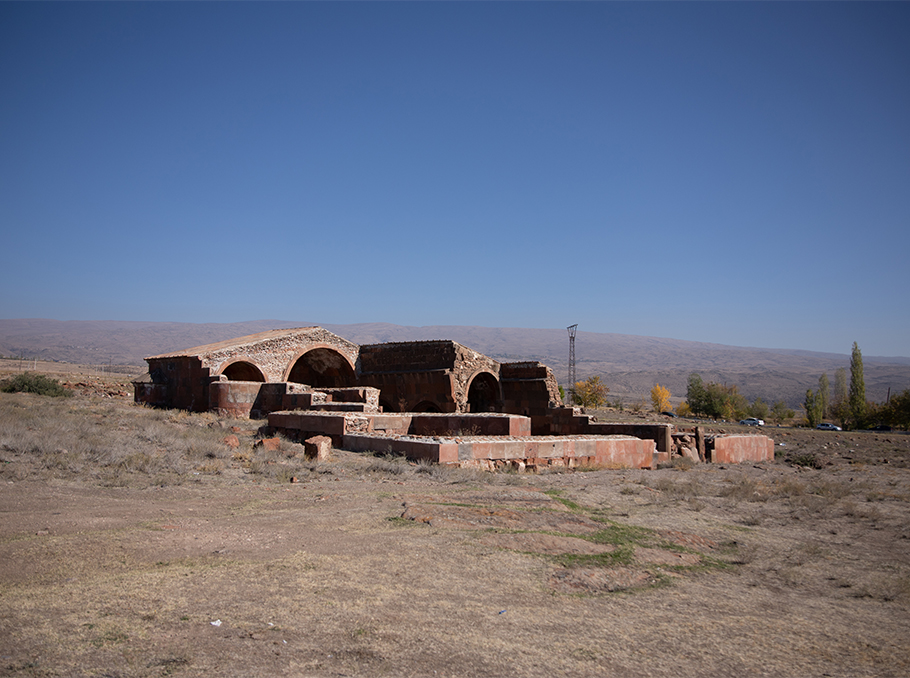 Caravanserai
CaravanseraiPhoto: Mediamax
It was a part of the Silk Road, where traders used to stay in the inn, and the wide opened entrance allowed loaded animals to enter as well. But before we go in the footsteps of history, let’s first get to know today’s settlement and the hardworking people living here.
The glory of the past and today’s modest life
The guardian of historical and cultural monuments and historical environment of Arutch and surrounding villages – this is how Mihran Manukyan introduces himself and greets us in the center of the village and accompanies to discover Aruch.
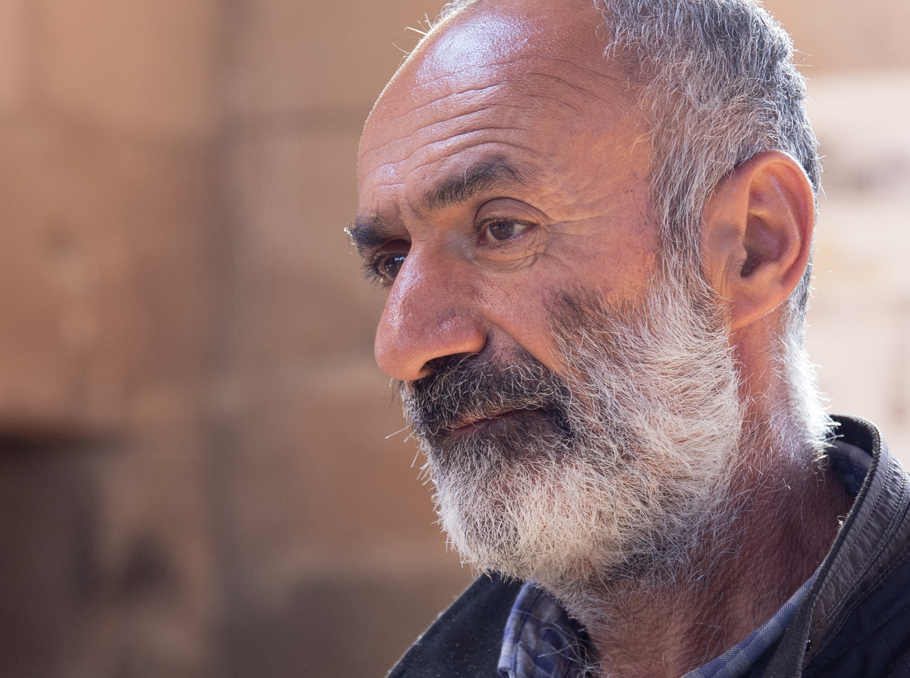 Mihran Manukyan
Mihran ManukyanPhoto: Mediamax
“The village has been of great significance since ancient times, in the Middle Ages it was an administrative center, a link between Dvin and Ani. The bad thing is that now it does not enjoy the glory of its past, it has become a forgotten village, living a normal everyday life. A few years ago, the movement was active, many tourists were coming,” says Mihran Manukyan.

Photo: Mediamax
According to 2019 data, the village has 1,111 inhabitants. People here are engaged in cattle breeding, gardening and fieldwork. The village faces problems with gas supply, drinking and irrigation water.
“The main jobs are in the village administration, in the school, in the out-patient clinic, in the post office. In general, modest people settling for less live here,” says he.
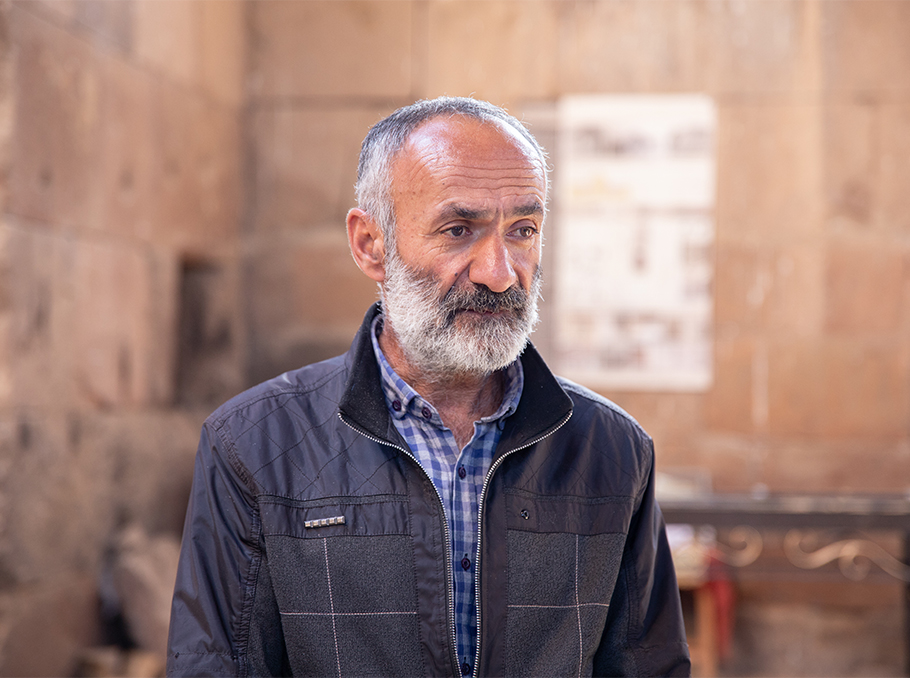 Mihran Manukyan
Mihran ManukyanPhoto: Mediamax
The villages of Armenia, as Mihran says, need attention both from the state and the residents. People need to value what they have in order to be able to keep it. Years ago, it was with that realization that Mihran Manukyan and his friends established Aruch Covenant Day.
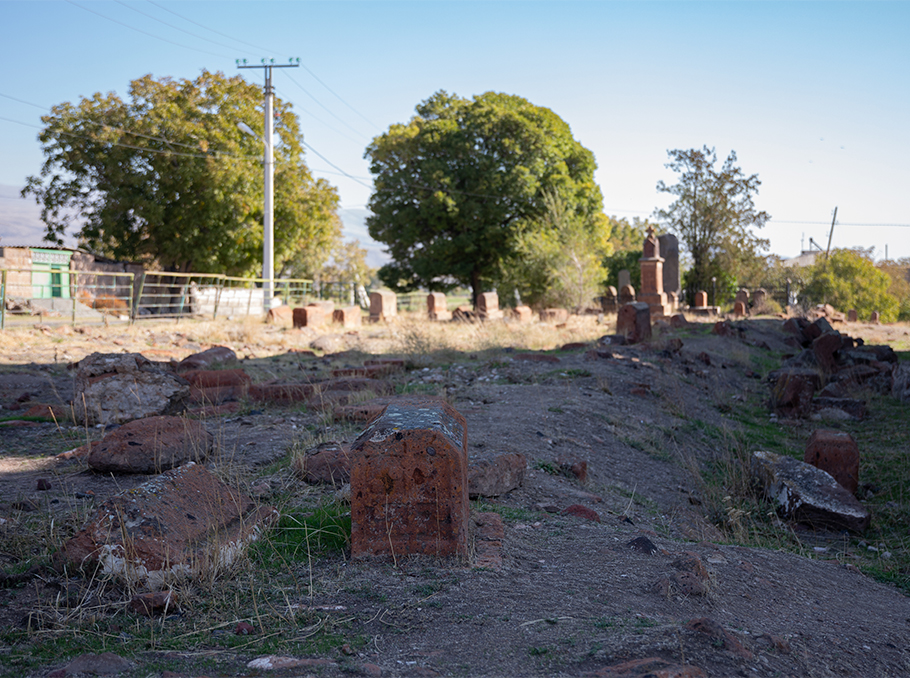
Photo: Mediamax
- In 1989 my childhood friend Tatul Krpeyan and I as well as our other friends took an oath in the yard of Aruch church and went to the front together. After that, every year, on the second Sunday of November we gather and make a sacrifice for soldier. It is a sign of people’s attitude towards the village and the country, ordinary people and soldiers and the state must do its part. People want justice, smart governance.
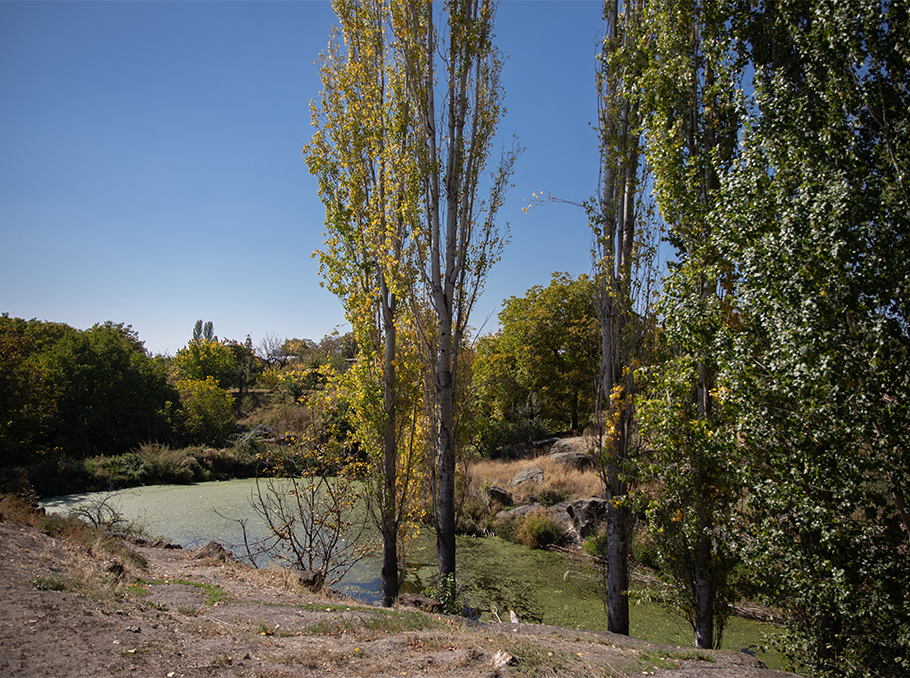
Photo: Mediamax
We need quality, we can not compete with quantity, the state must define and maintain that quality. It all has to start from school, the time has come for the brain to work.
The young man who loves the village and hardly-earned living
There is a whole ensemble of monuments in Aruch, and the khachkars (cross-stones) spread in different parts of the village give the impression that you are walking through a museum without territorial restrictions. Here khachkars were used to be placed in the yards and gardens of houses. To see one of these khachkars, you have to reach near the cultivated lands, a place called “Van’s gardens.”
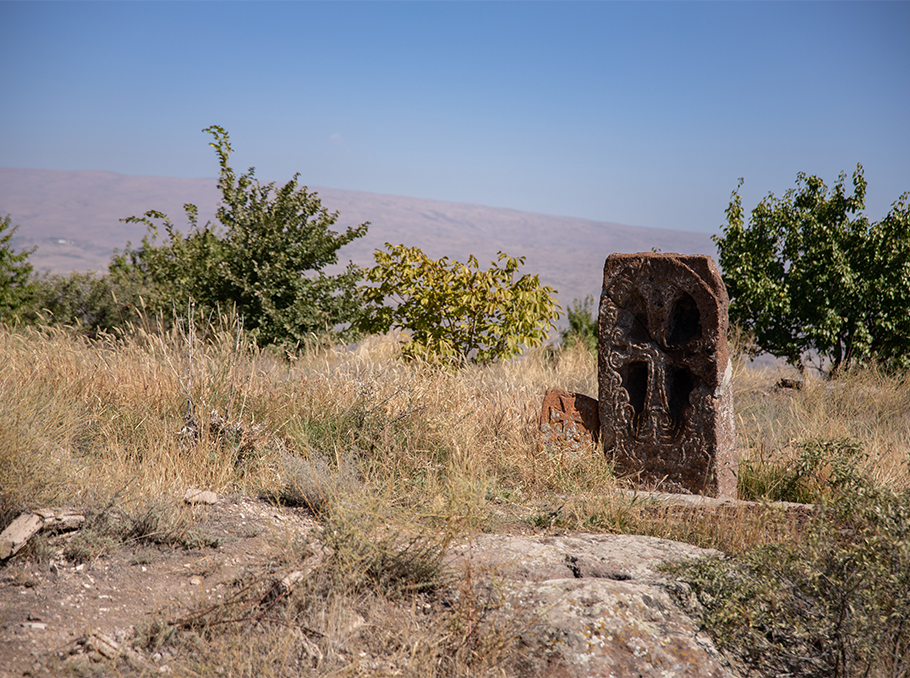
Photo: Mediamax
Not far from the solitary khachkar there is a similar solitary wagon-house on wheels. The dogs and the Soviet SUV hovering around suggest that the hut is not empty, and that hint, as we find out while approaching, comes out right.

Photo: Mediamax
The young man straightens his clothes and greets us, narrowing his eyes at the sun. After a while he already shows the tomatoes and watermelons he has grown and tells about the difficulties.
- Not having gas in the village is a serious problem. People also do not have irrigation water, they cultivate a garden, but there is no possibility to irrigate. It is impossible to get a good harvest by watering once in five months. We cultivate barely on our own.
 Onik Martirosyan
Onik MartirosyanPhoto: Mediamax
Onik Martirosyan is 23 years old, after serving in the army he decided to cultivate their fields and gardens in the village with his father. They grow grapes, apricots, tomatoes and watermelons. The family has four members: parents, son and daughter.
- And what do the young people do?
- The young people are in the town. I have a friend, in winters we work together in a supermarket in the town. Some of the girls go to the town to study after school, some of them get married before they graduate. There is no free time, but I like being in the village.
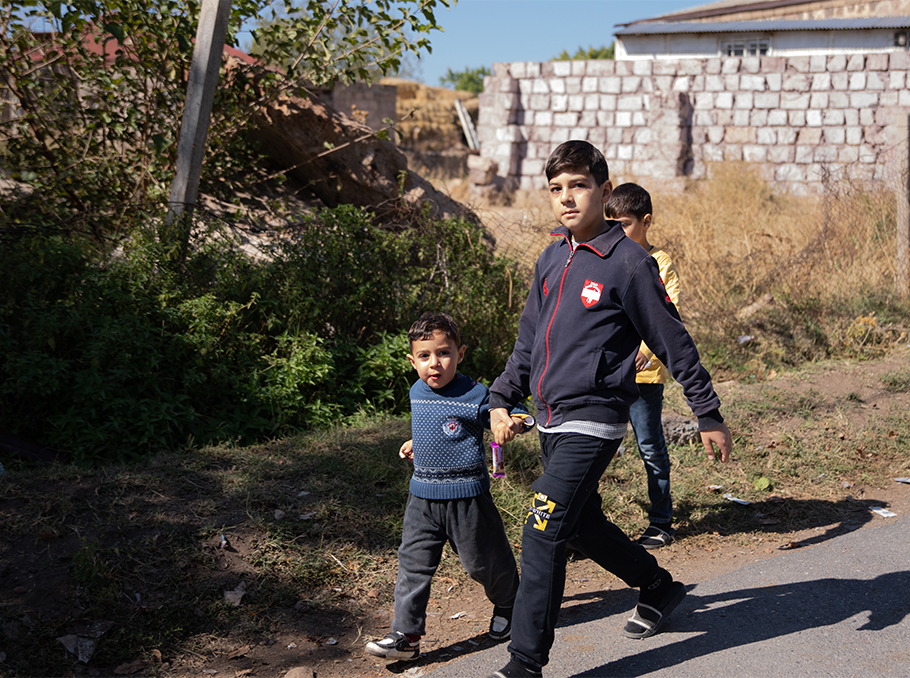
Photo: Mediamax
- What plans for future do you have?
- I want to establish a greenhouse. Then, I will get married, but I do not want to stay in the village. I have decided to live in the town. Now we have a rented house there, my mother and sister stay there and work, and my father and I move there in winter. There are not many “seasonal” young people living and working in the village like me, there are many who go abroad. My sister will probably go to Korea soon to teach English.
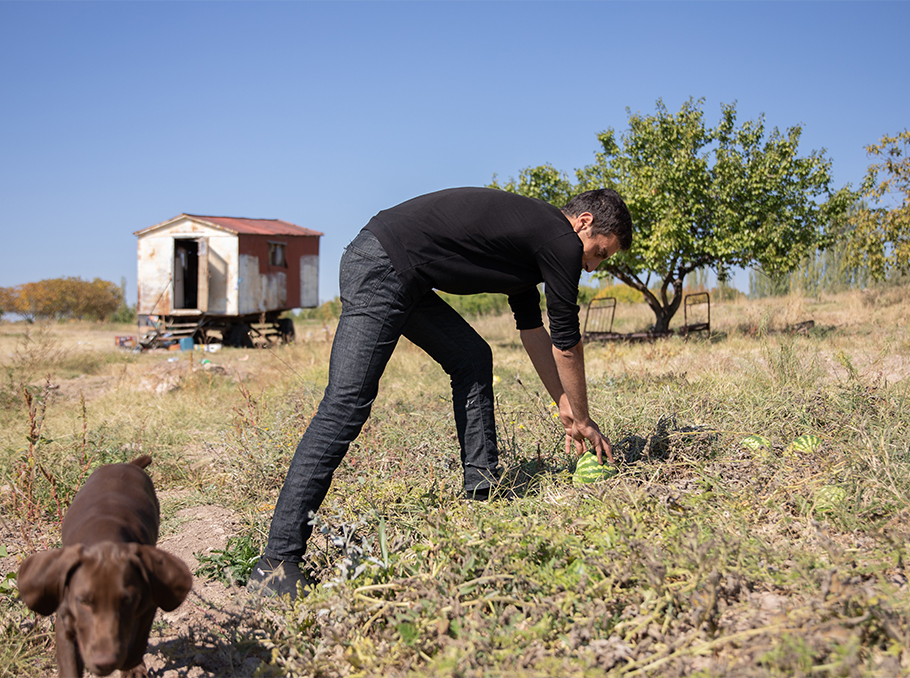 Onik Martirosyan
Onik MartirosyanPhoto: Mediamax
During the conversation, Onik shows the biggest of the tomatoes he has grown and says that it is the most delicious “Anahit” sort, but the people of the town judge only by appearance, they do not understand and sometimes it is difficult to sell it in the market.
- And the children? Do you think that when it is their turn, they will cultivate their land like you?
- Children are playing with the phone under the trees. Few will continue to work in the village. It seems to me that little by little, the work in the village will die, because the generation will change, there will be no more angry grandfathers who will say, dear boy, cultivate your land to live well.
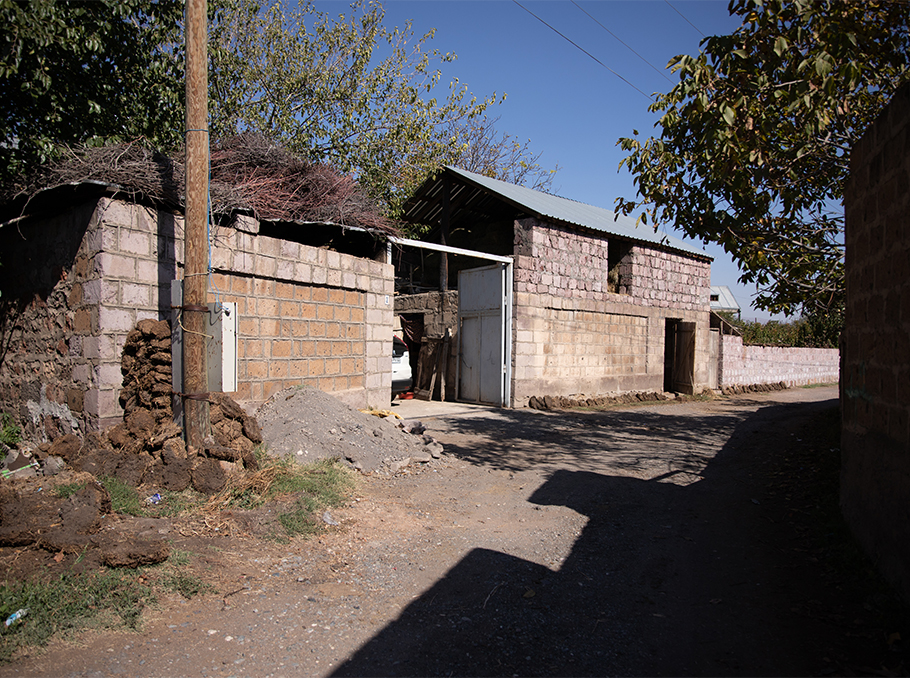
Photo: Mediamax
The future of the village, the longing of mothers and the wish to live free
After bidding farewell to Onik, we head to the village school, where we arranged meeting with one of the teachers. On the way we notice two shepherds sitting in the shade of a tree.
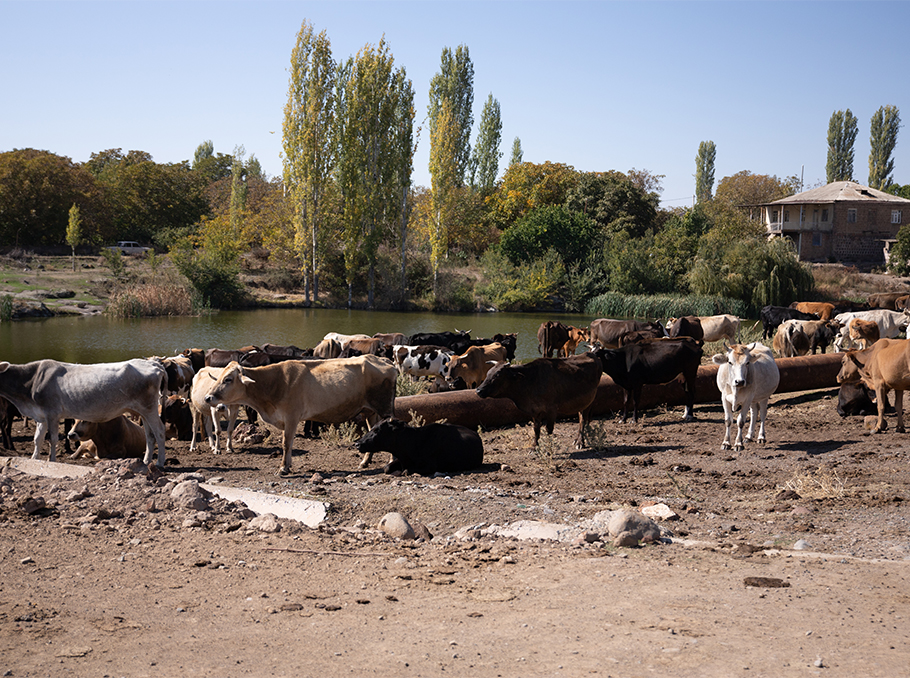
Photo: Mediamax
The herd is resting near an artificial pond. One of the shepherds hides from the camera, the other, on the contrary, starts a warm conversation.
Alik Mamudyan says the herd is small because it is not profitable to engage in cattle breeding in the village, the fodder is very expensive and the meat is cheap.
Alik is married and has 2 children. He has been doing this work for 4 years, he is not complaining of his salary and he is especially glad that he does not have to go to Russia for work.
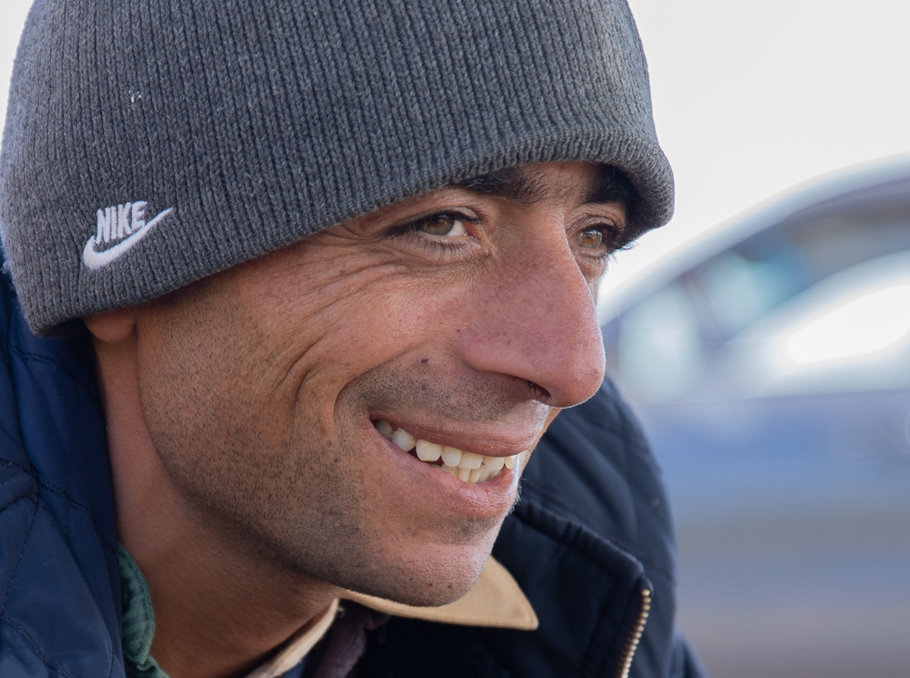 Alik Mamudyan
Alik MamudyanPhoto: Mediamax
- What will we do in Russia? If everyone leaves, who will stay in our country? My work is seasonal, but I am glad to be by my family.
Then we start talking about the future, having a third child, and suddenly the shepherd looks on the horizon with dead eyes and after a few minutes of silence continues his speech.
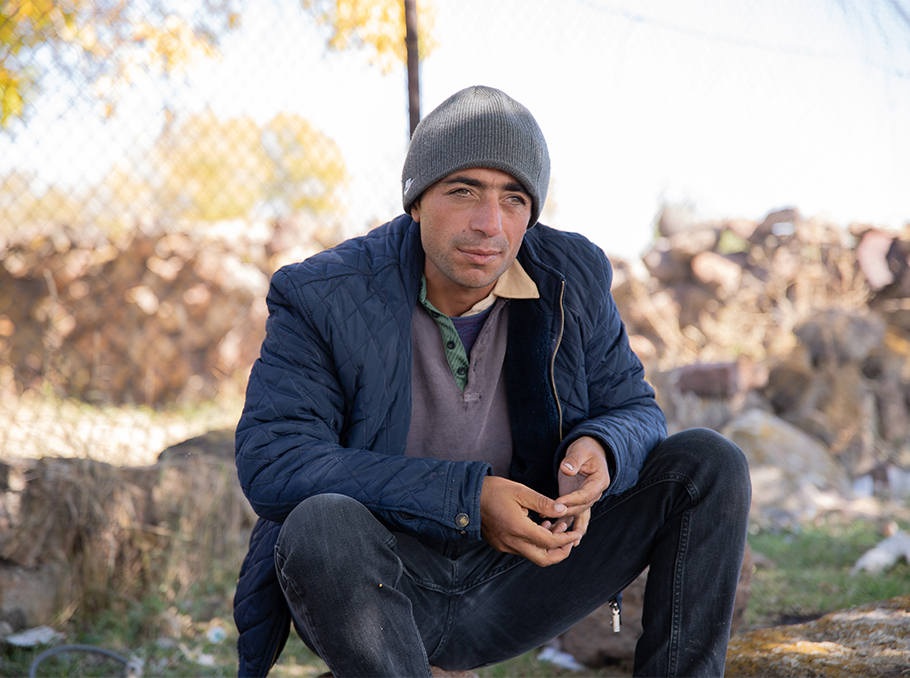 Alik Mamudyan
Alik MamudyanPhoto: Mediamax
- What should I say about the future now? Who is speaking about future in our country after the war? Now we are just getting along with something. Only welfare is not enough, you must live free and secure. And the villager does not need much for welfare – if they have work, they will work and live well.

Photo: Mediamax
We continue the conversation about the future with Lilit Asatryan, a teacher of Armenian language and literature at Aruch school, who says that the basis for a good future is laid at school, and then she begins to praise her students.
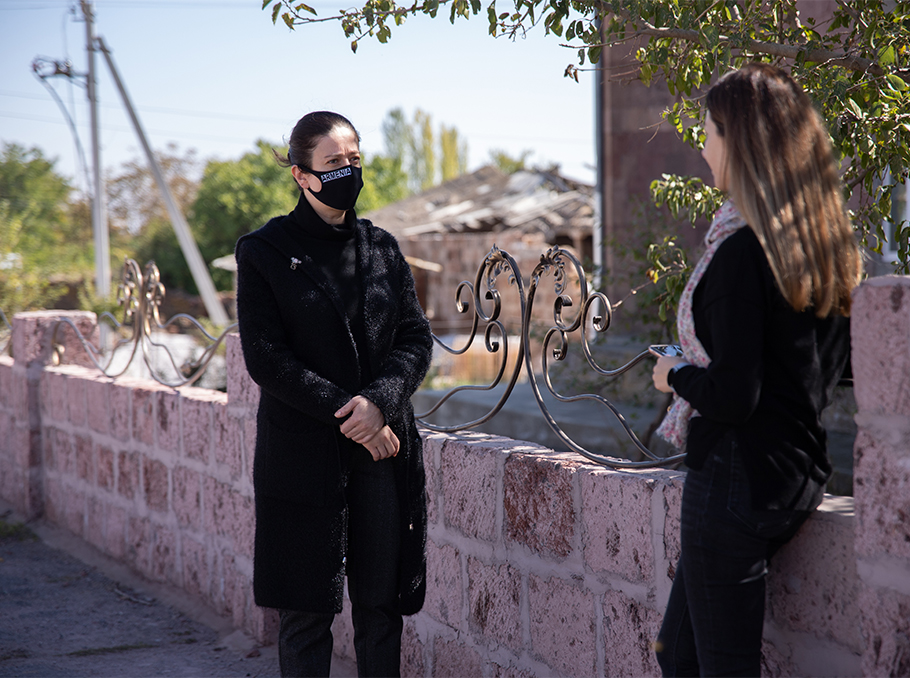 Lilit Asatryan
Lilit AsatryanPhoto: Mediamax
- Every year up to 7-8 students enter universities, they study very well, the only bad thing is that later they can not work in the village because there are no jobs. This is the reason why young people do not stay in the village.
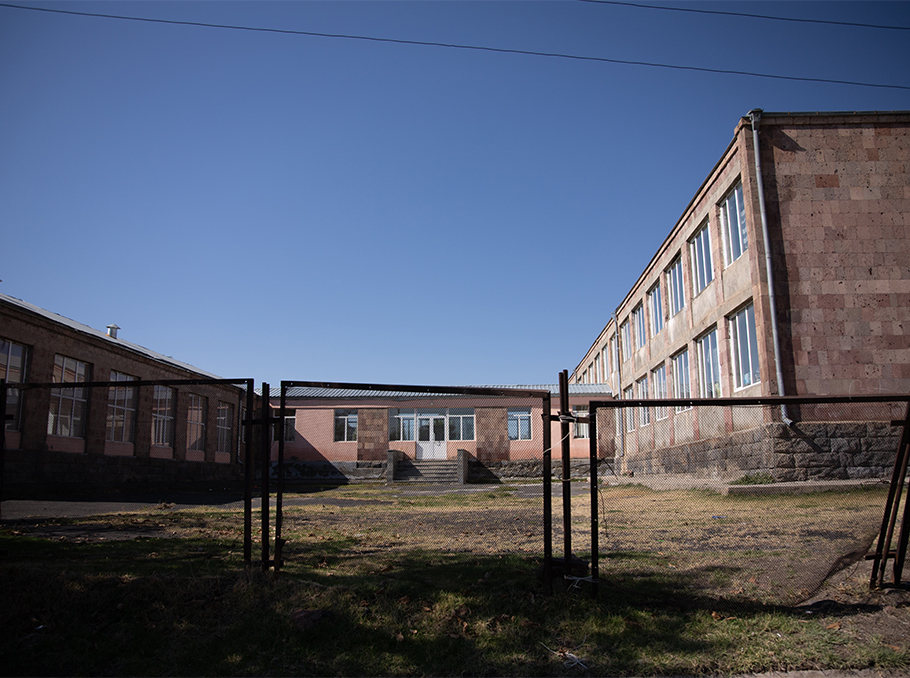 Aruch secondary school
Aruch secondary schoolPhoto: Mediamax
They have a preschool in the school, where the number of children is increasing year by year, which shows that the birth rate is growing in the village.
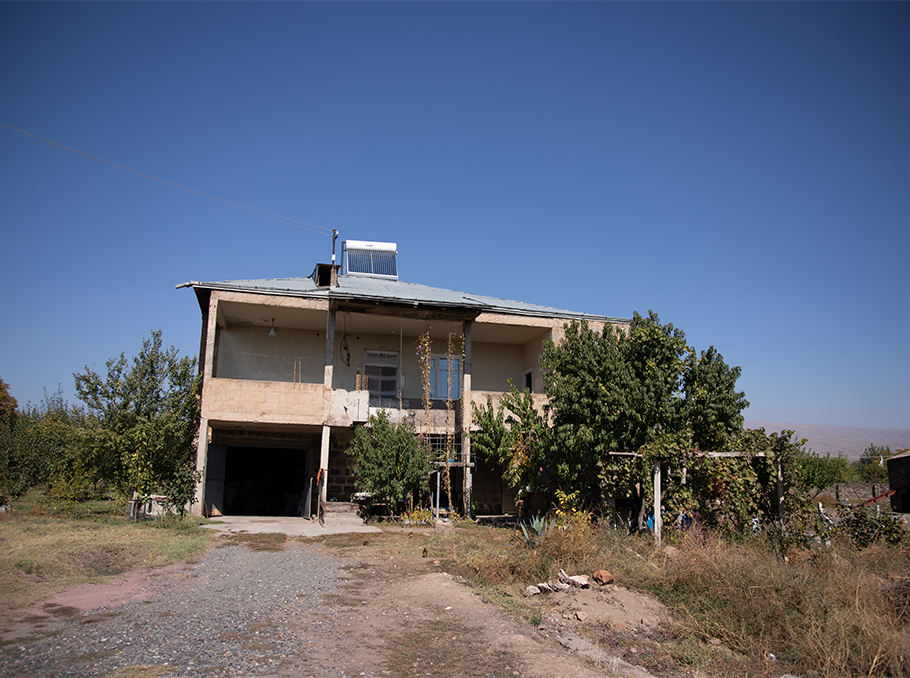
Photo: Mediamax
There is a two-storeyed house right in front of the school, from the other side of the gates we are greeted by a middle-aged, modest-looking woman. Nigar says that she was born in Aruch and got married here. She has three children, her daughters are married and her son serves in the army.
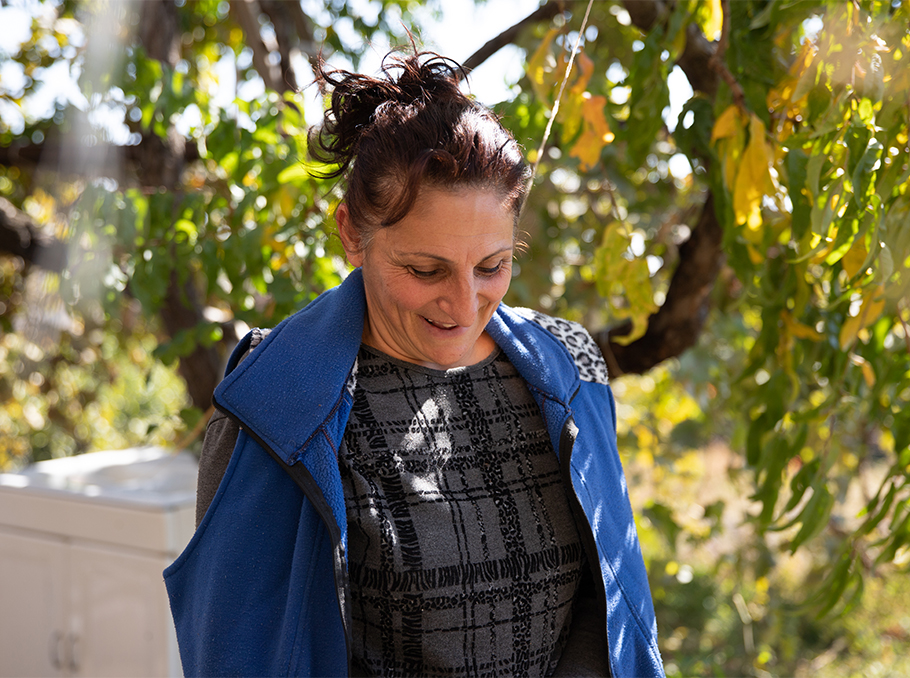 Nigar
NigarPhoto: Mediamax
- My daughters got married, my son is in the army, they left us alone, that’s why it is sad. It was very difficult during the war, you cannot explain it in words. My son was wounded during the war. It was a miracle that my son survived. After all that, you look at life differently. Everyone must serve, but we just need peace…
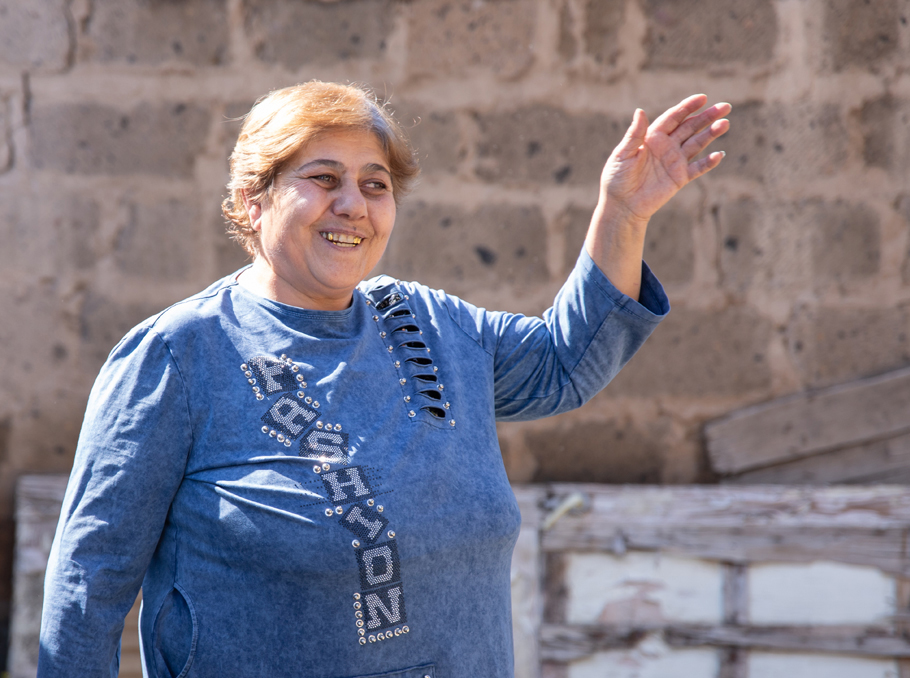 Sofya
SofyaPhoto: Mediamax
A bit later we meet another mother, who looks with dead longing eyes while talking about her daughter. Sofya says that she has a daughter who is married and lives in Russia with her family.
- I went to them last year, but I could not stay. There were not even stars there at night. I was born in Byurakan, got married in Aruch, I am used to seeing stars at night, but the sky there was starless. Life there is even colder.
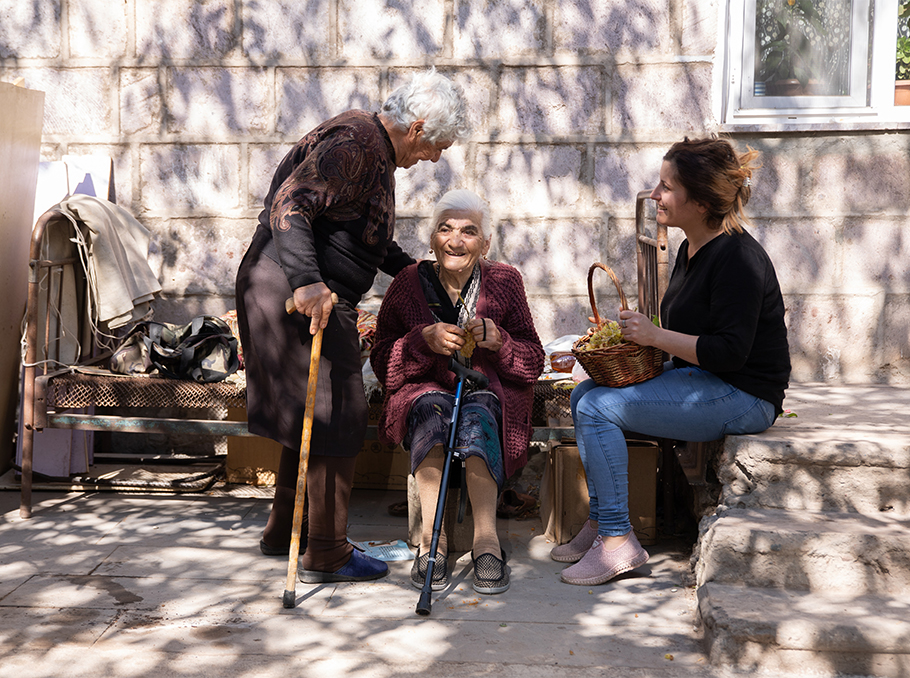
Photo: Mediamax
It is true – I live alone, but I never feel alone, because people here care for each other. Life in the village is dead, but there is warmth in the village that you will not change with anything.
The historical wonders of Aruch
Aruch was the seat of Prince Grigor Mamikonyan, and there is a lot of evidence left here after the prince.

Photo: Mediamax
The fortress and citadel of Aruch village are on the list of historical monuments, they were built in the 5-17th centuries.

Photo: Mediamax
St. Grigor (Katoghike) Church is Aruch Cathedral Monastery Complex, the second thing after the Caravanserai that “welcomes” the visitors of the village. According to the construction protocol, the sanctuary was built by Grigor Mamikonyan in the 7th century.
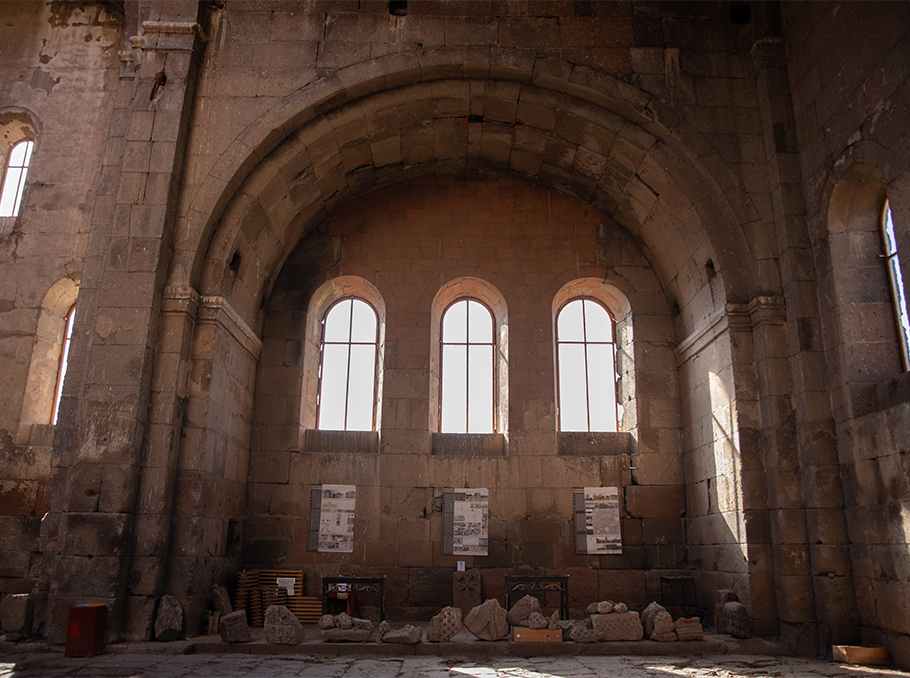
Photo: Mediamax
The church is considered one of the most remarkable monuments in the early medieval temples of Armenia with its architecture and frescoes.

Photo: Mediamax
During the excavations, a temple of 5-7th centuries was found in the southeastern part of the church, which, according to historical sources, was also built by Grigor Mamikonyan. Although the temple was not completely preserved, the standing part suggests what a beautiful structure it was.
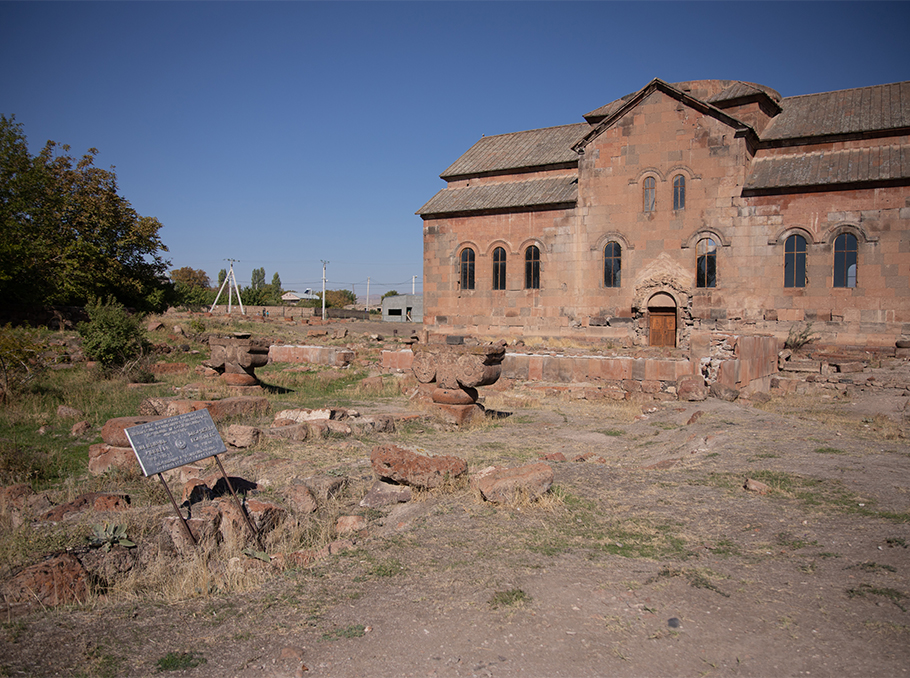
Photo: Mediamax
The Aruch Palace is similar to the Palace for the Catholicos at Dvin, consisting of two separate buildings: a large hall and a secular building with a columned hall. Art historian, Doctor of Historical Sciences Karen Matevosyan in his “Archeological Observations: Aruch, Havuts Tar, Ani, Aghtamar, Vayots Dzor” writes that the decoration of the Palace is the throne room. One of the two capitals preserved in the columned hall is similar to the capitals found in Dvin, decorated with broad-leaved palms, on the top are grape leaves and fruits.
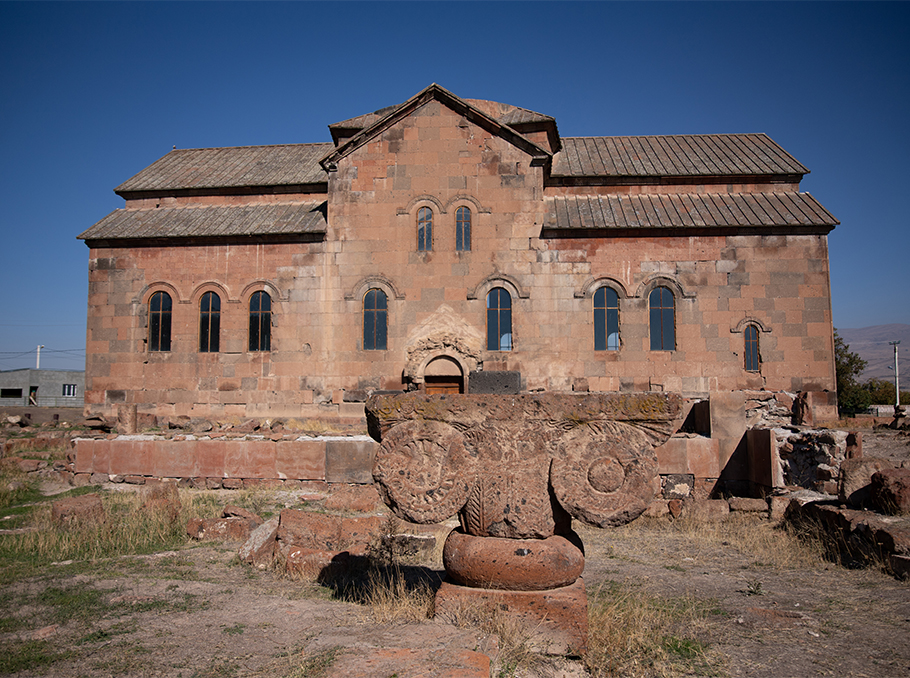
Photo: Mediamax
The structure that appeared after 1950-52 excavations of Aruch Palace, was considered a building of Grigor Mamikonyan’s Palace.

Photo: Mediamax
Varazdat Harutyunyan, the head of the excavations, prepared a detailed article about the results of the 1953 excavations of the Aruch Palace. The excavations unearthed two large buildings in the south and southeast of the Aruch temple and ruins of a chapel. Varazdat Harutyunyan conditionally called one of the big buildings the first hall, the second a secular building with a columned hall.
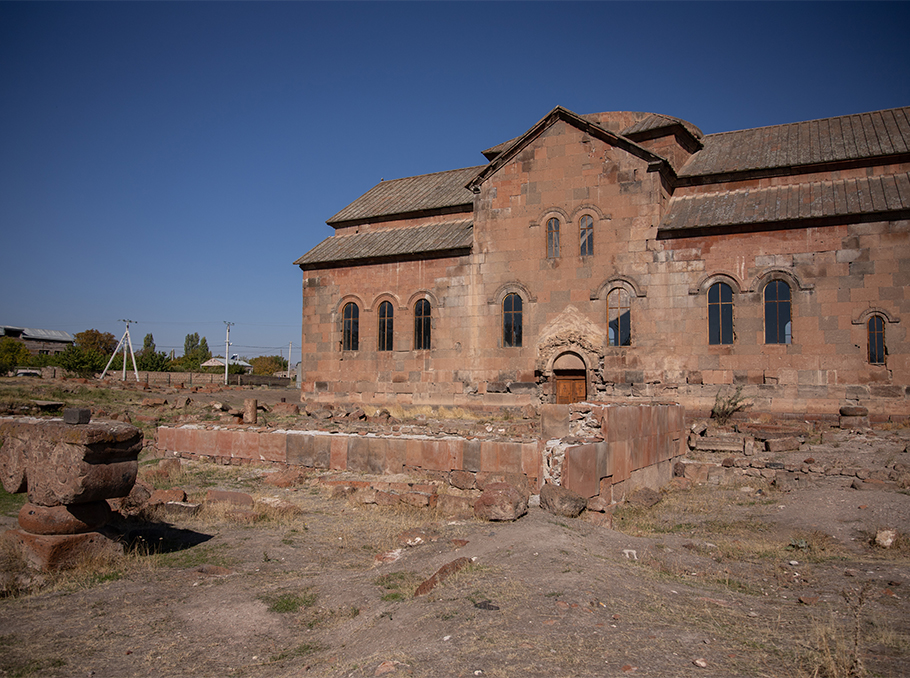
Photo: Mediamax
Some details of the basilica called “First hall” reminded him of a church building, but after mentioning some arguments, he finally concluded that it is a secular structure. In fact, the authoritative specialist who excavated the monument considered the building to be a separate palace hall, which later (late Middle Ages) turned into a small fortress,” says Karen Matevosyan in his book.
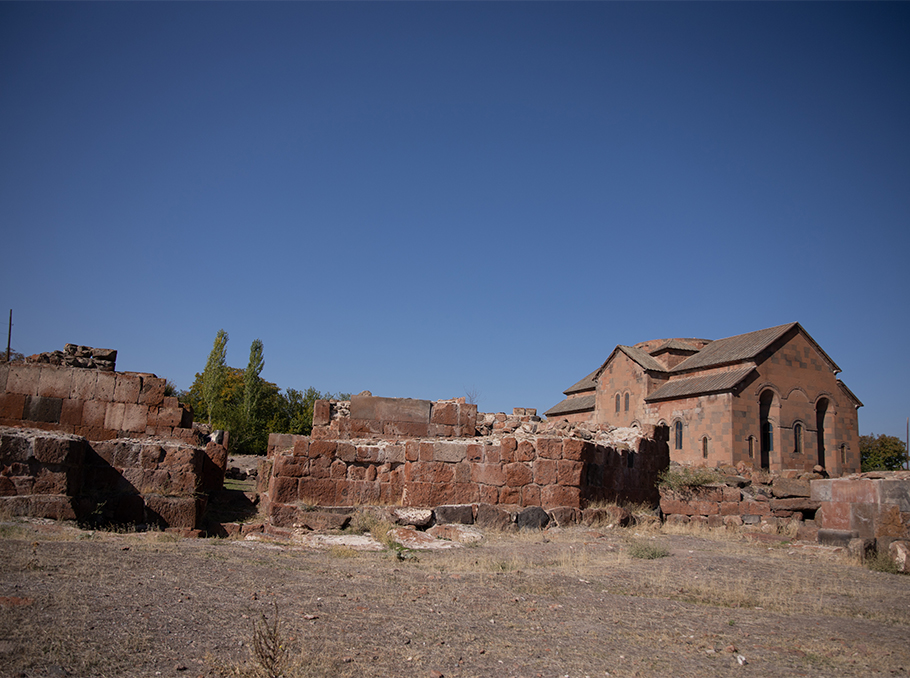
Photo: Mediamax
In 2006, on the initiative of the Monument Protection Agency, the area around the basilica was cleaned and turned into excavations (headed by Gagik Sargsyan). As a result, the hypothesis put forward by Karen Matevosyan that the building used to be a basilica was fully confirmed.
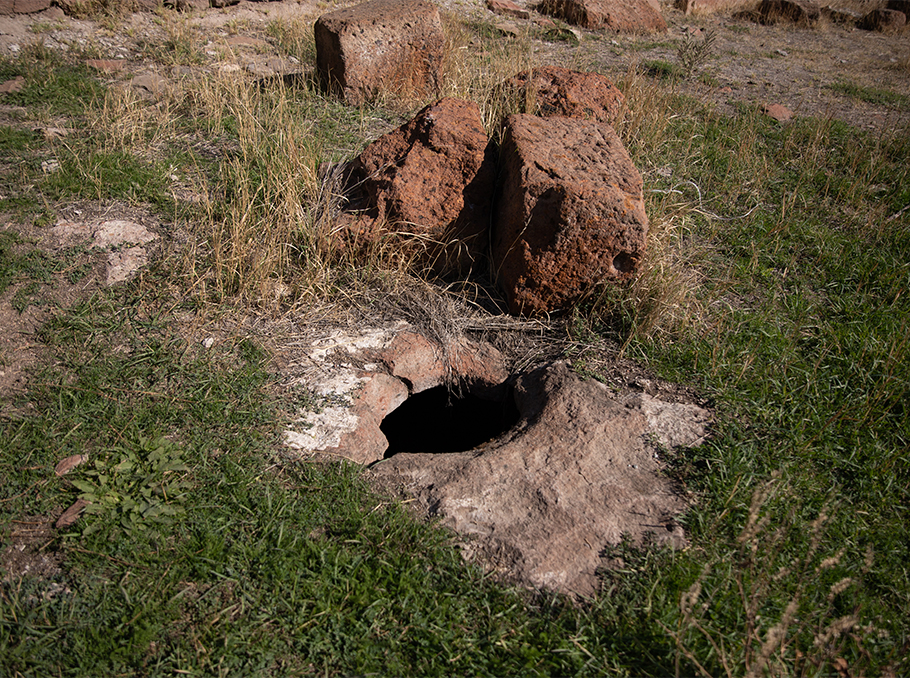
Photo: Mediamax
“The excavations of 2006 confirmed that the basilica structure, which was previously considered part of the palace, was in fact the 4-5th centuries basilica church, which probably in the second half of the 7th century, during the construction under Grigor Mamikonyan, was cut from eastern part as a result of reconstruction and probably was used for secular purposes, perhaps as part of the palace complex. The fact that the reconstruction was carried out with great construction skill suggests that the authors of such an initiative were skilled masters, who could be the builders of the Katoghike Church and the palace.
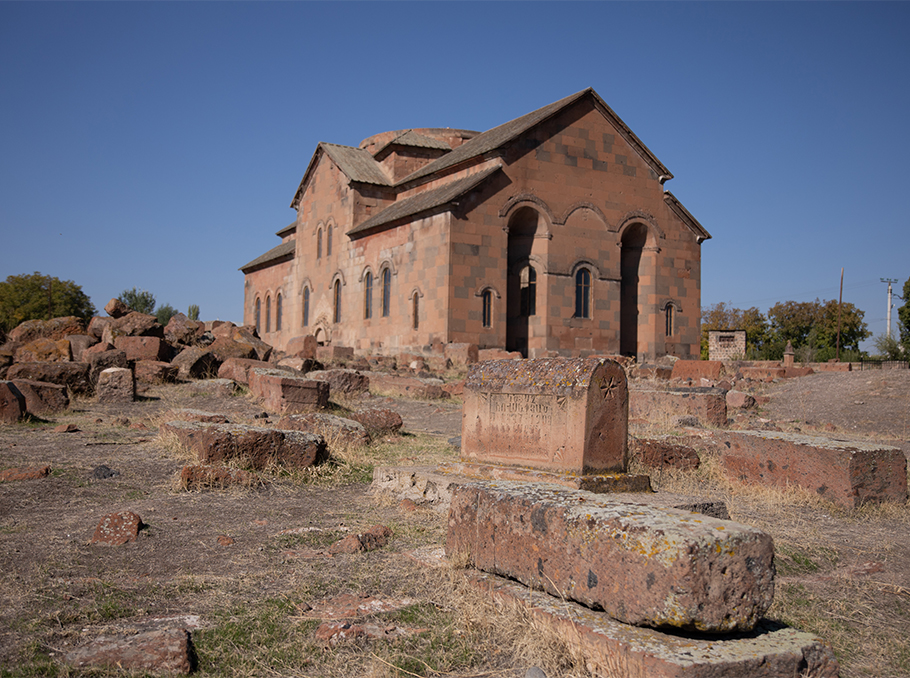
Photo: Mediamax
At the same time, in order to transform the church in such a way, it was necessary to have the highest privilege, such as the order of the prince. Anyway, now the structure is presented to the visitors in a form of several layers of reconstruction,” writes Karen Matevosyan.
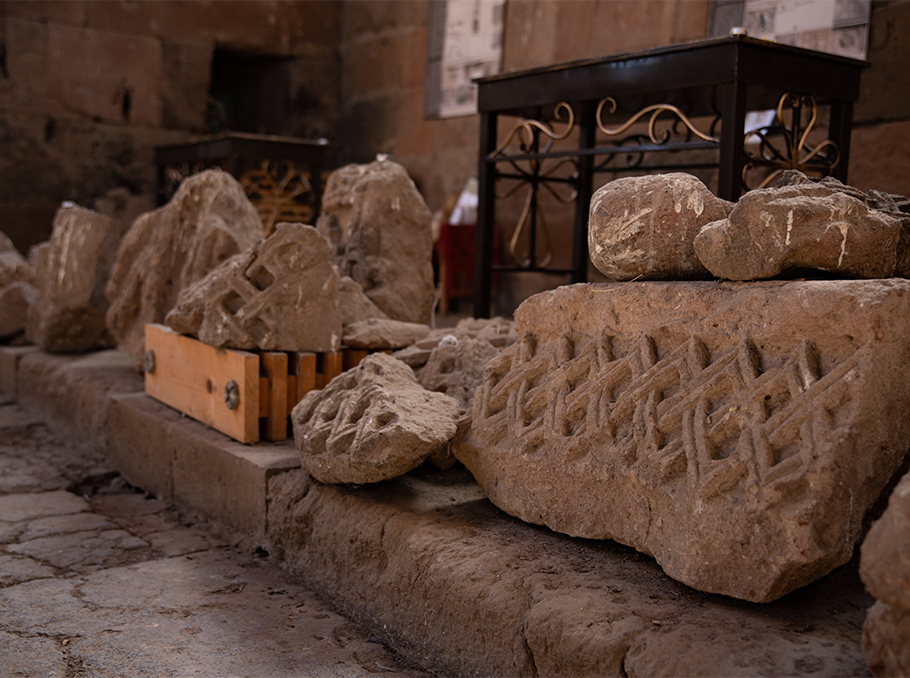
Photo: Mediamax
Aruch, located in the central part of the Dvin-Ani trade highway, experienced a second period of prosperity during the rise of the Bagratunis and Zakaryans, one of the evidences of which is the caravanserai built near the settlement. The caravanserai is the first thing that impresses the visitor and the last thing that is “nailed” in the memory when leaving the village.
Marie Tarian
Photos by Elen Gasparyan
The current article was produced with UNFPA support. The views expressed in this article are solely of the authors and do not necessarily represent those of UNFPA. ![]()
#demogaphicresilience














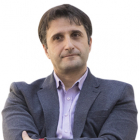


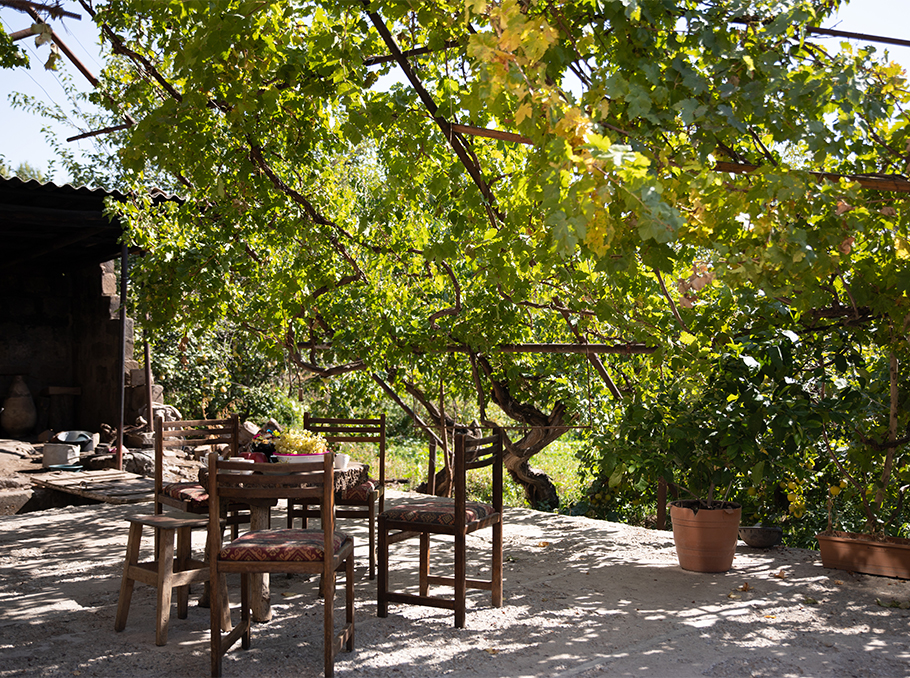
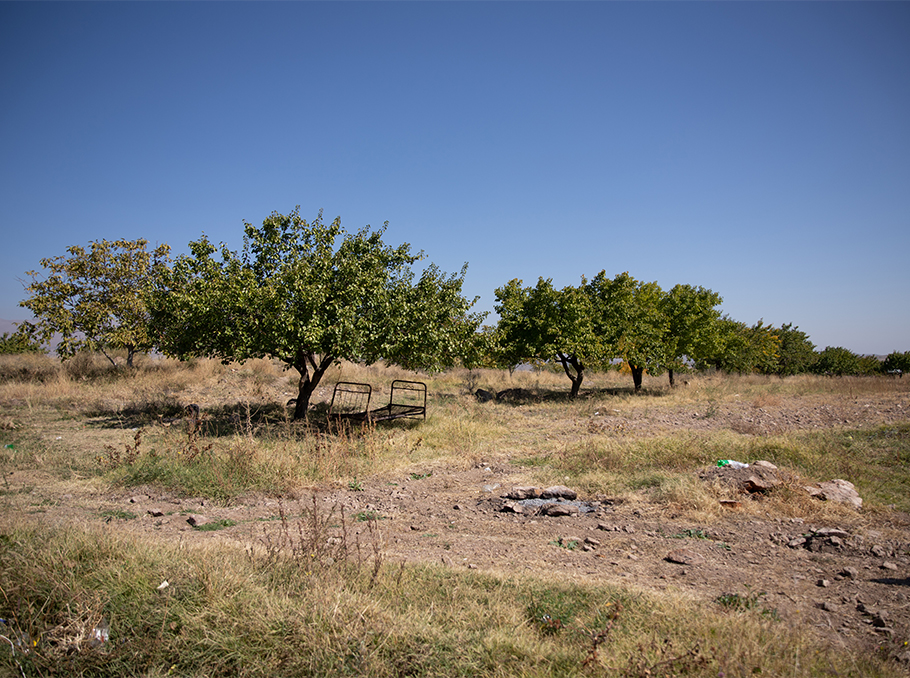
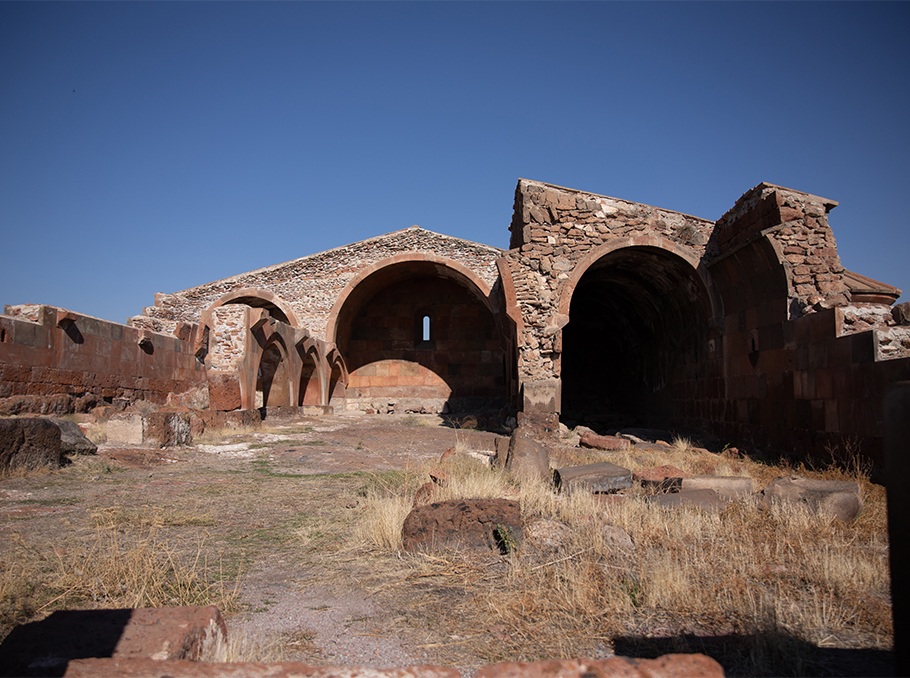

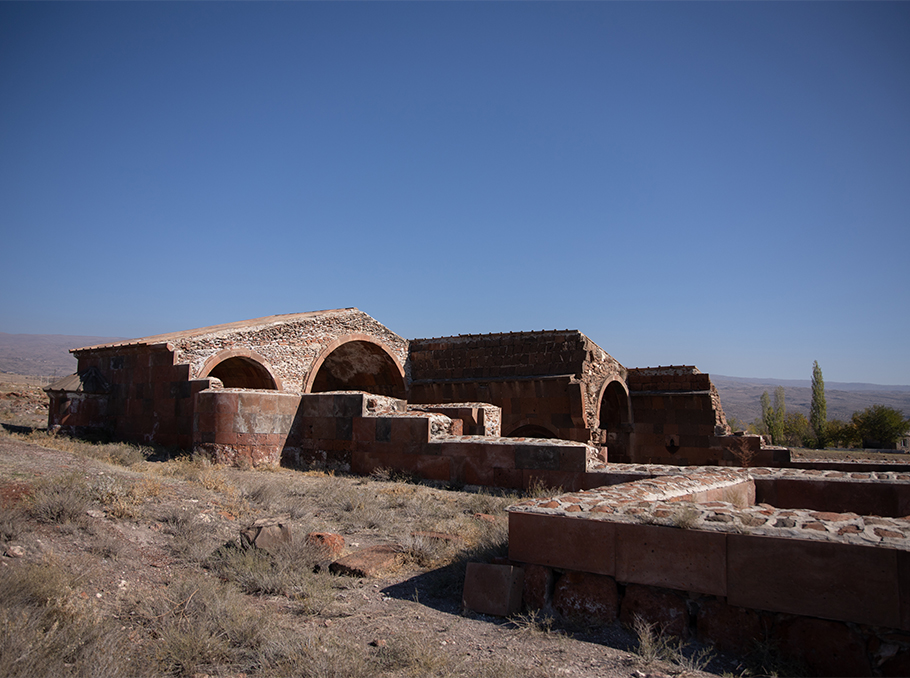
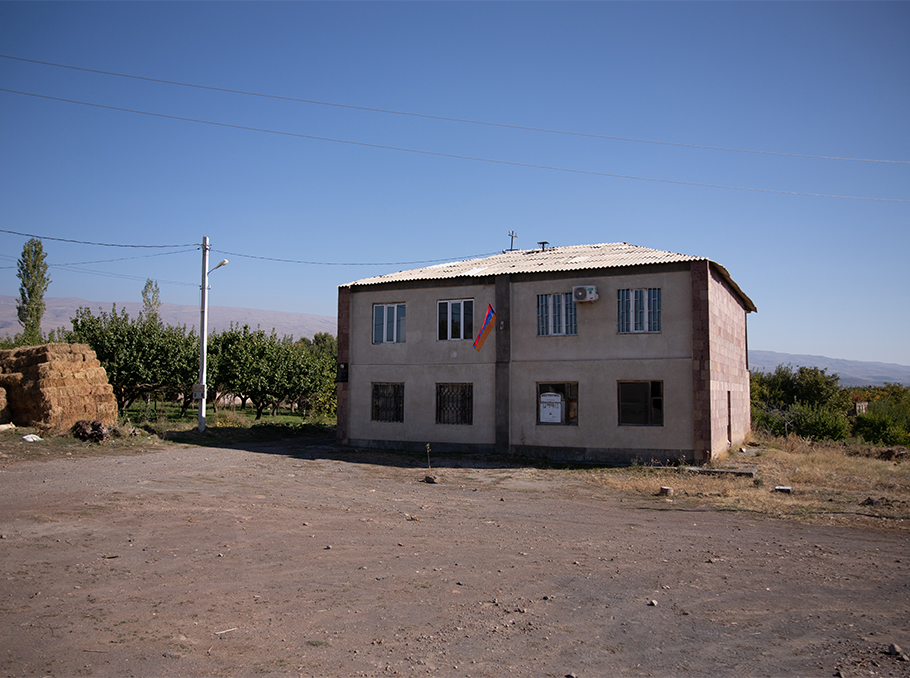

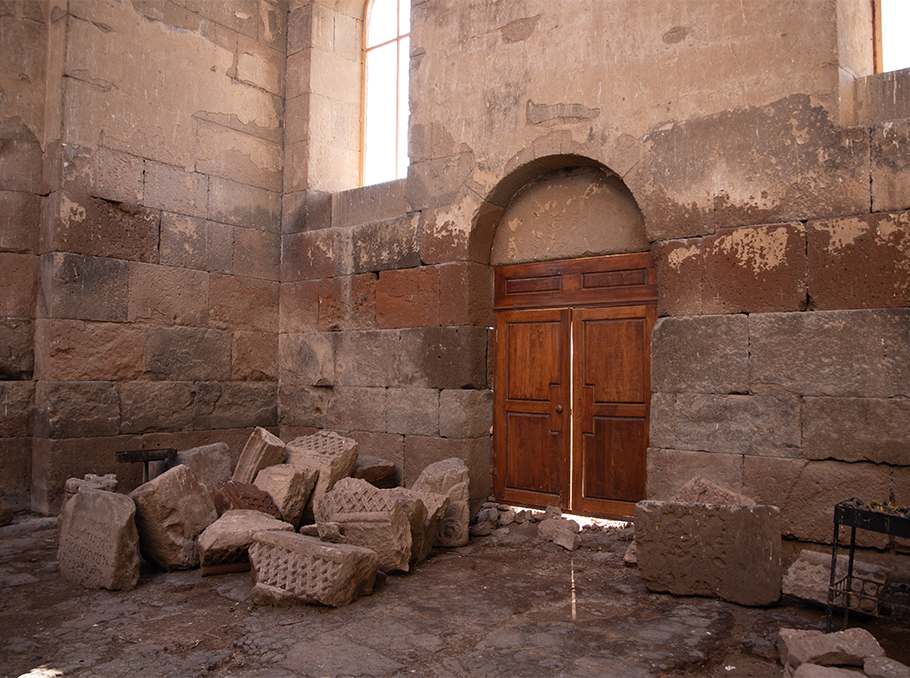
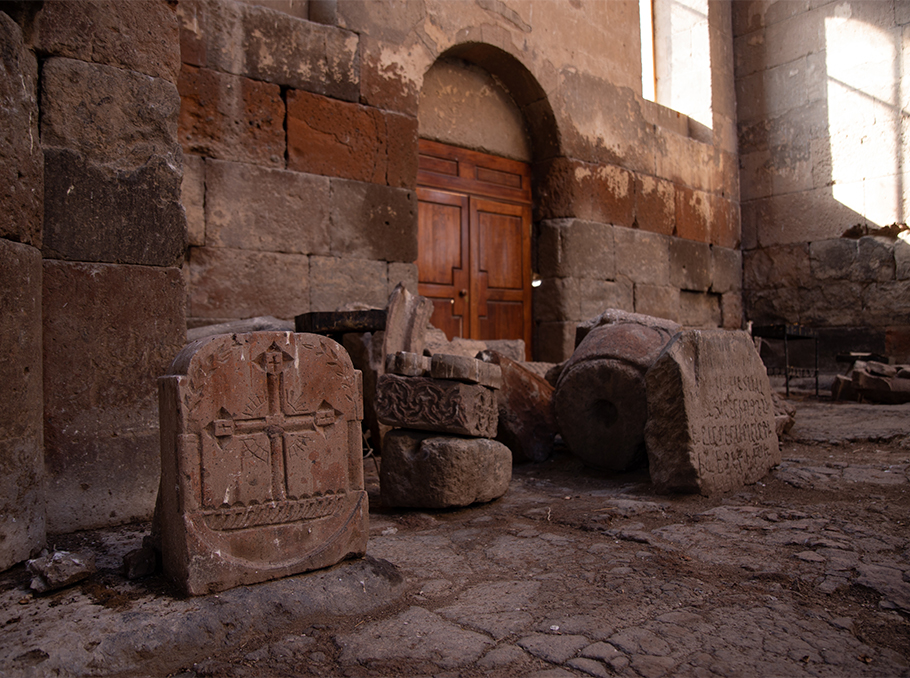
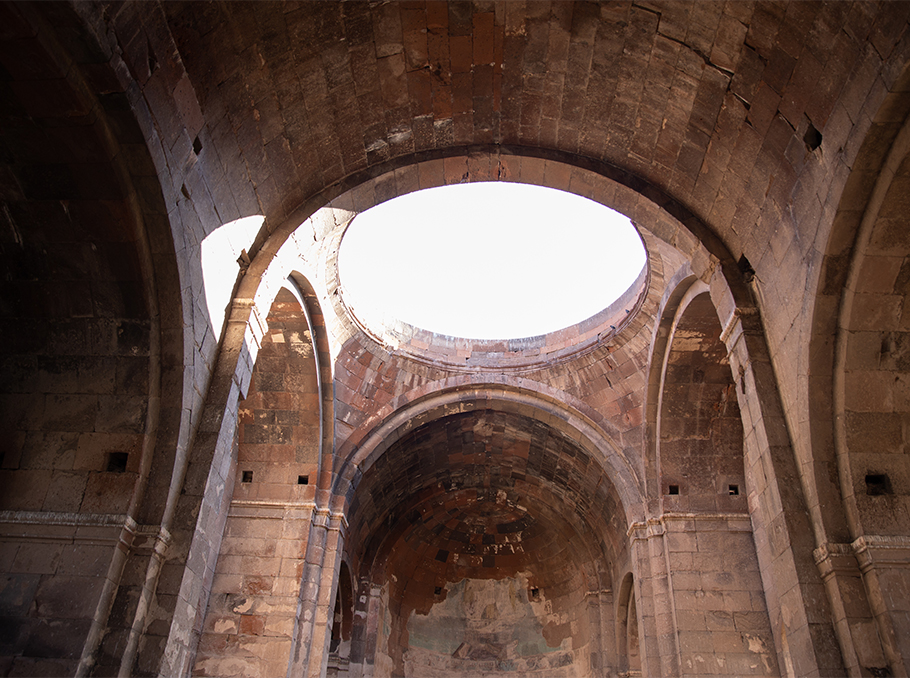

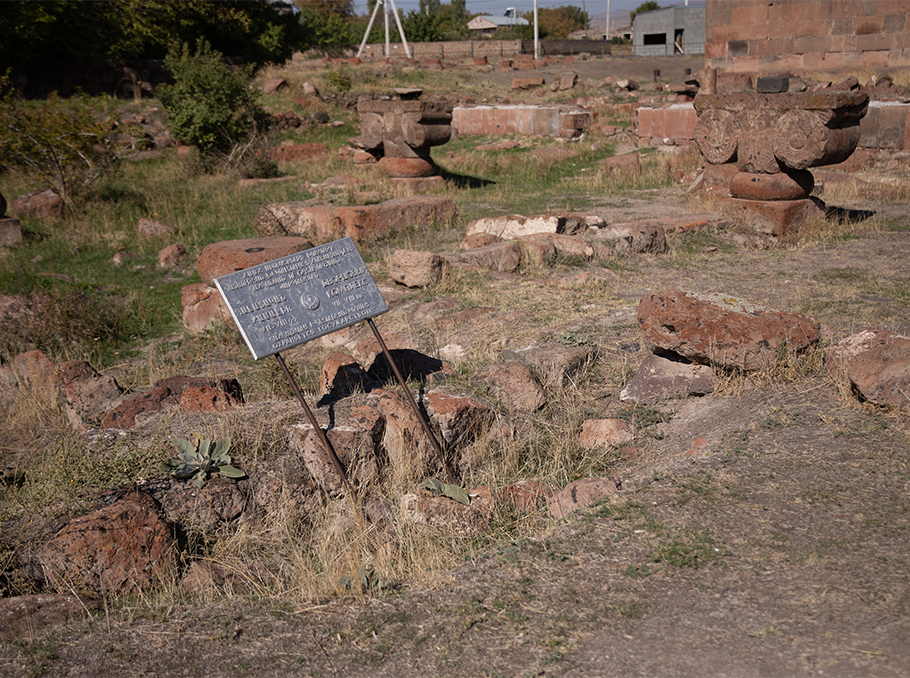
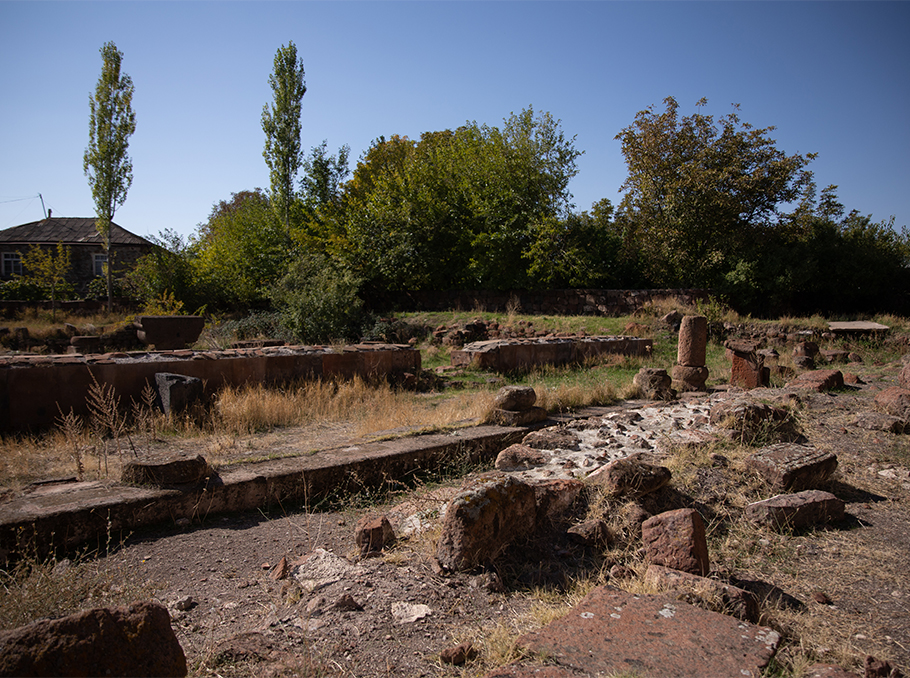
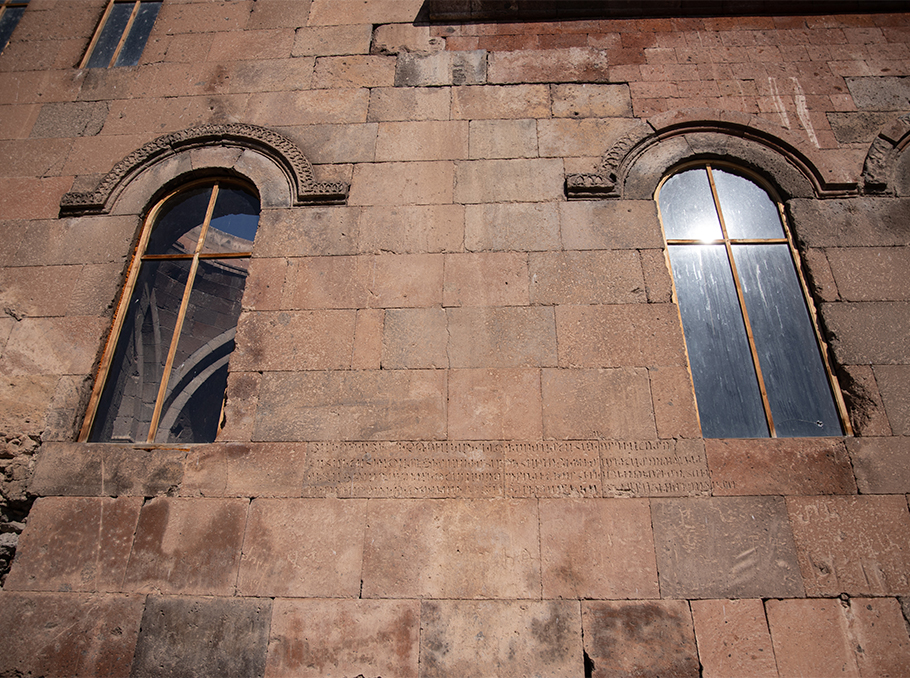
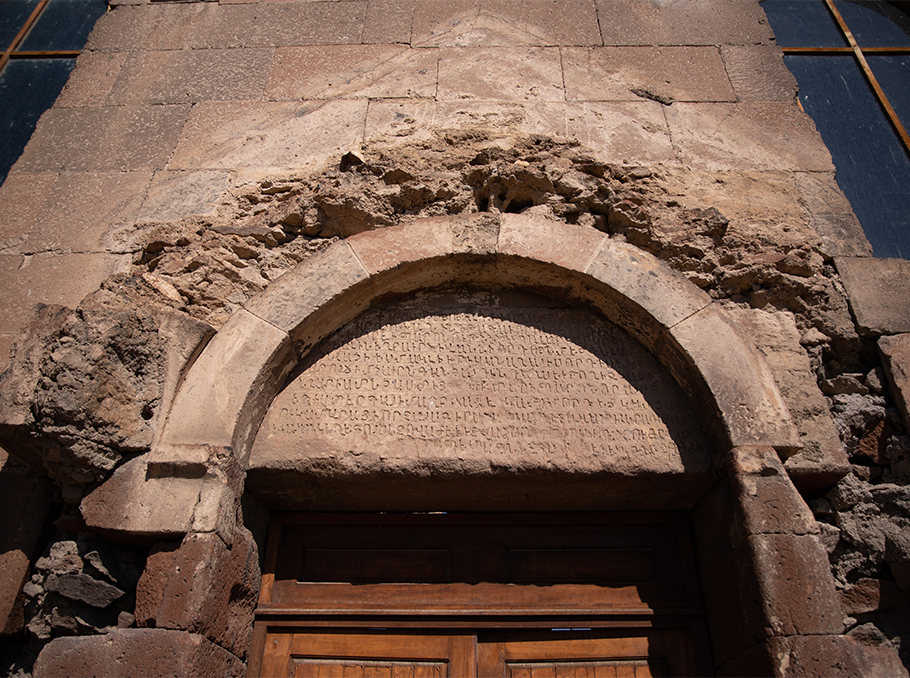
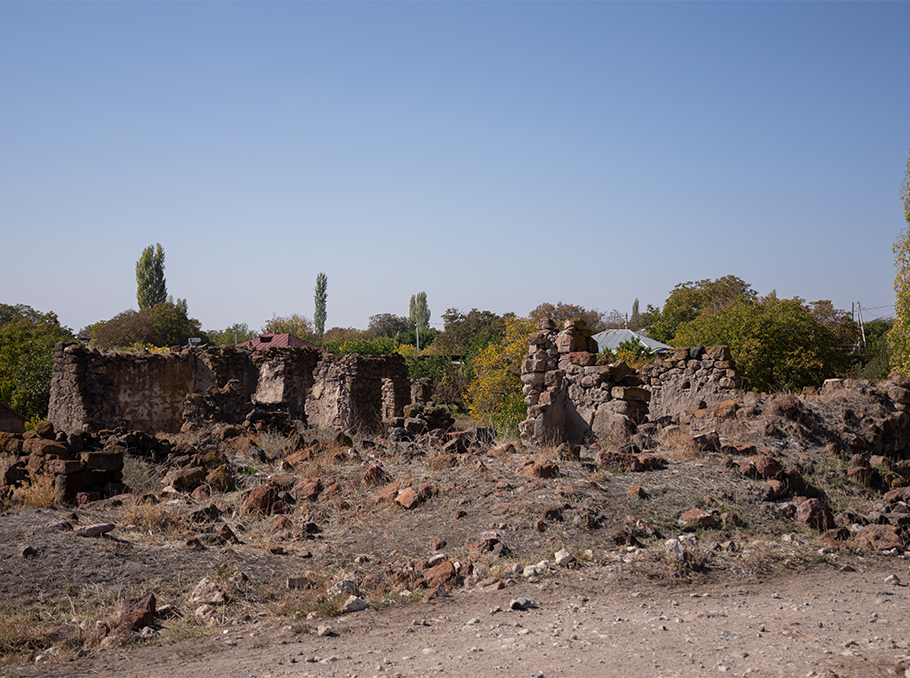
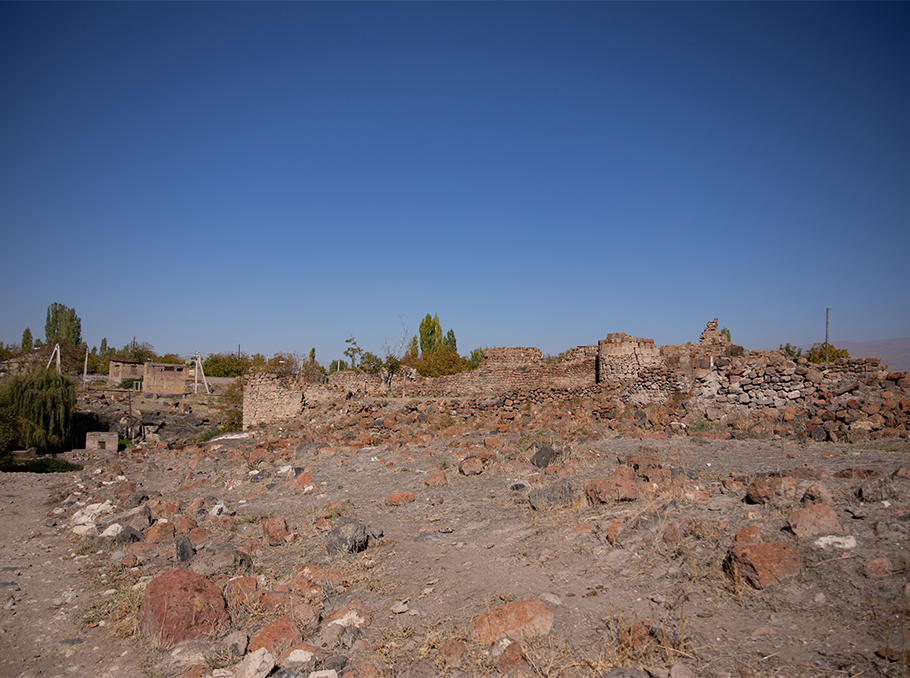

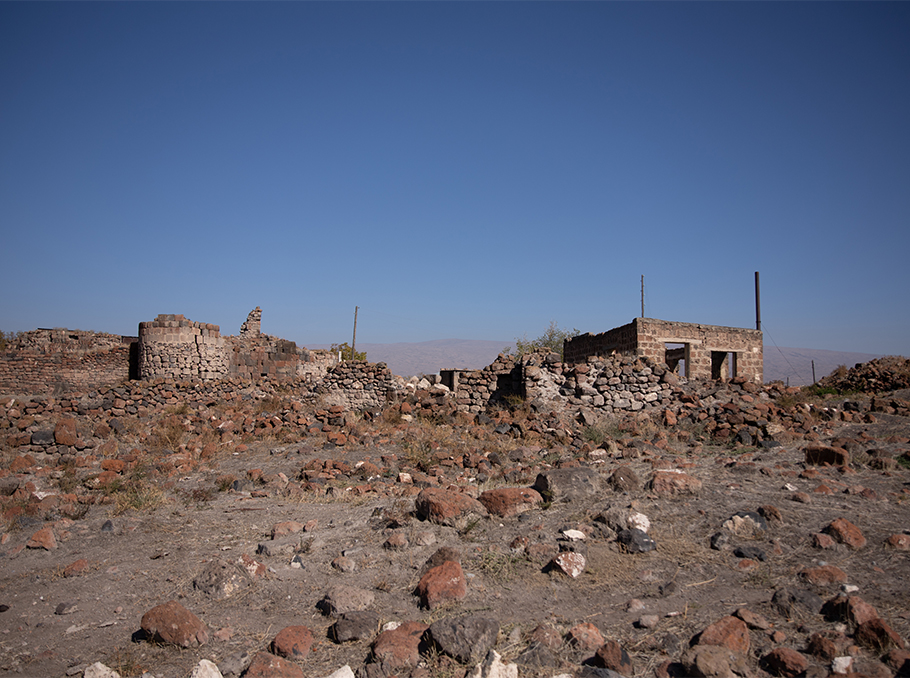
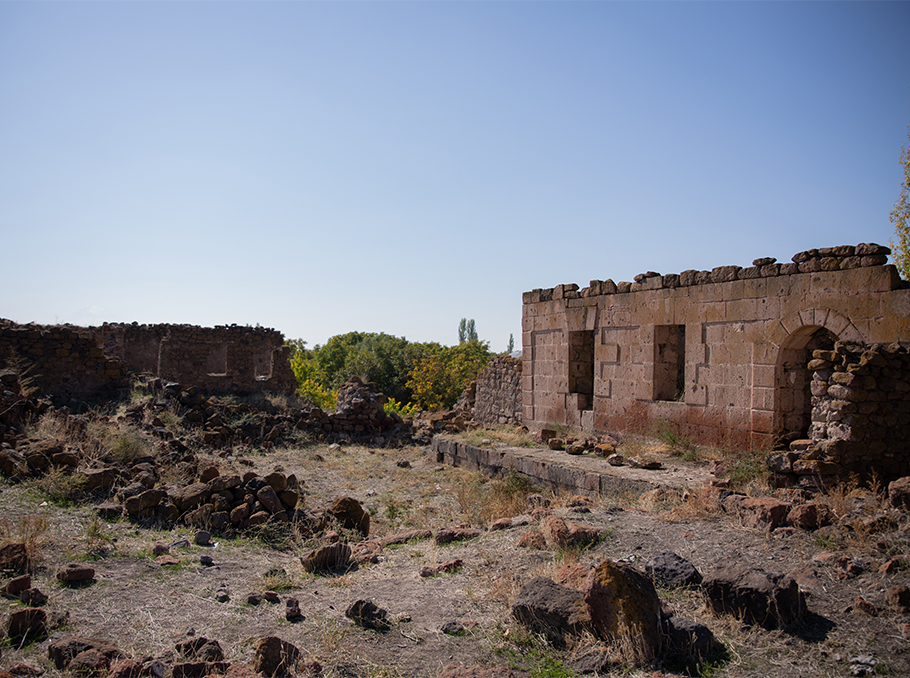

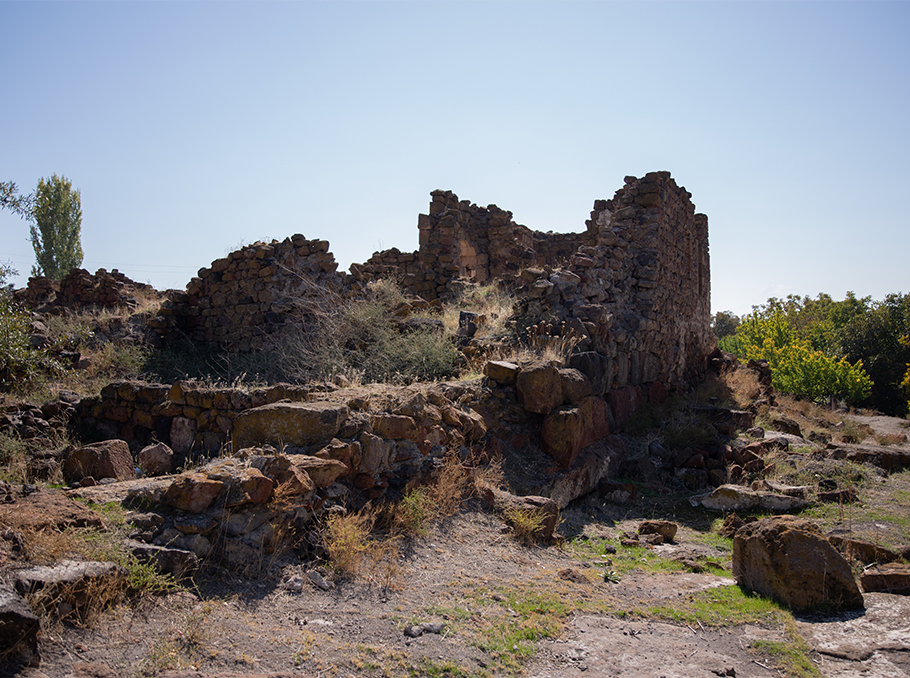
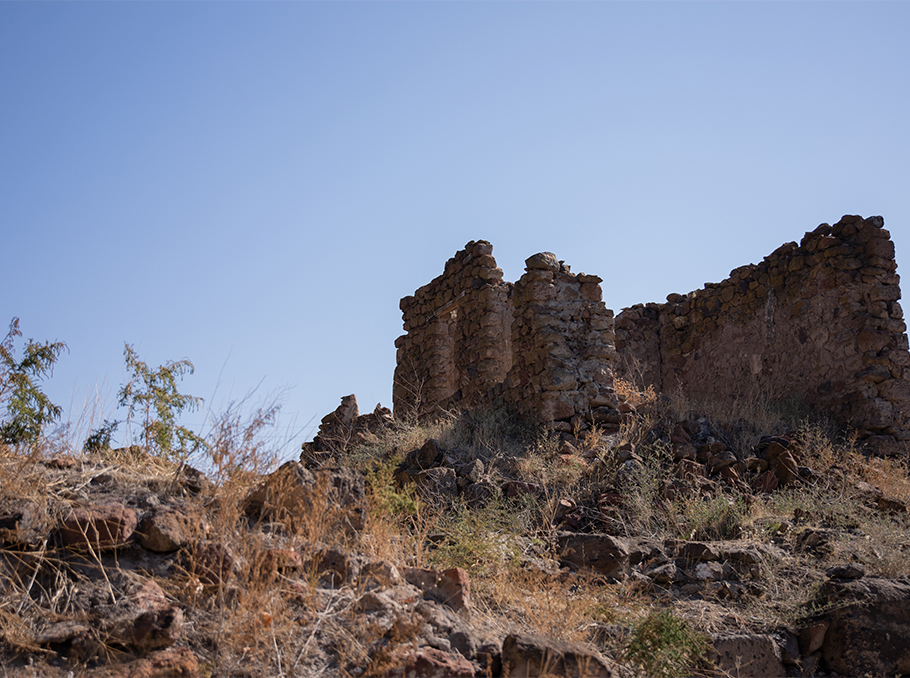
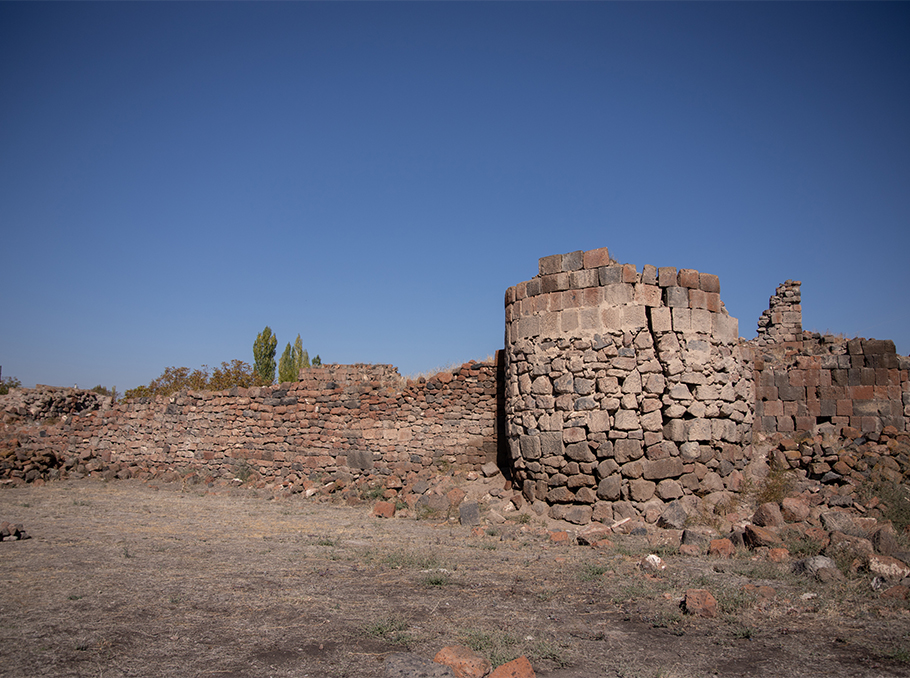
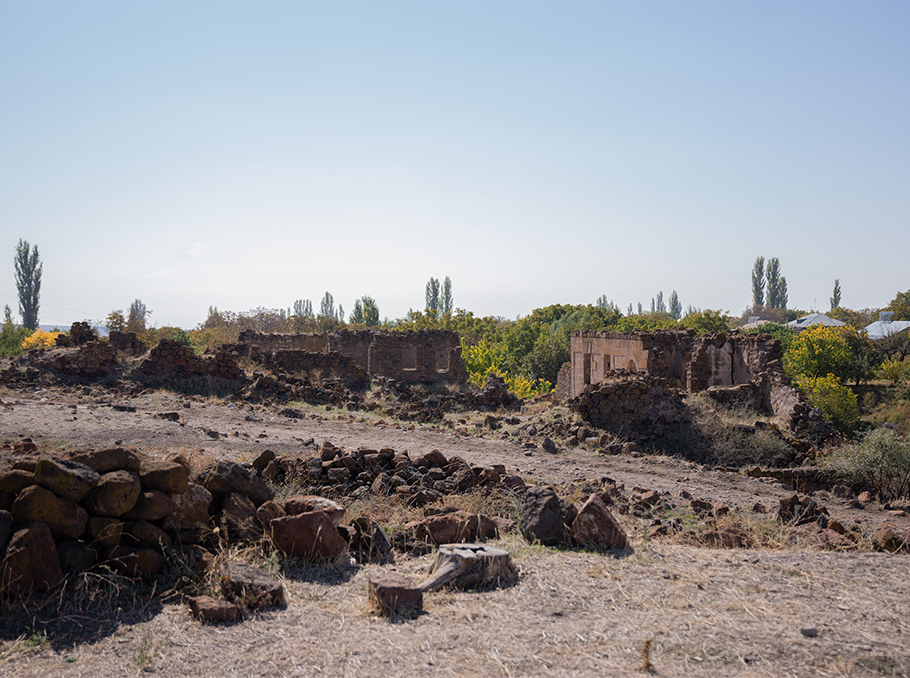

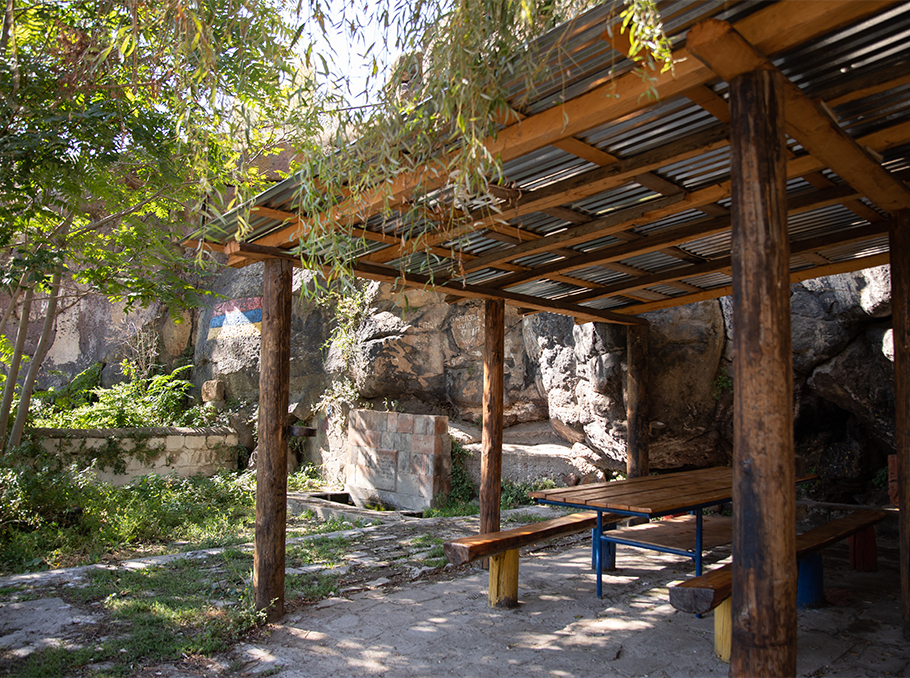
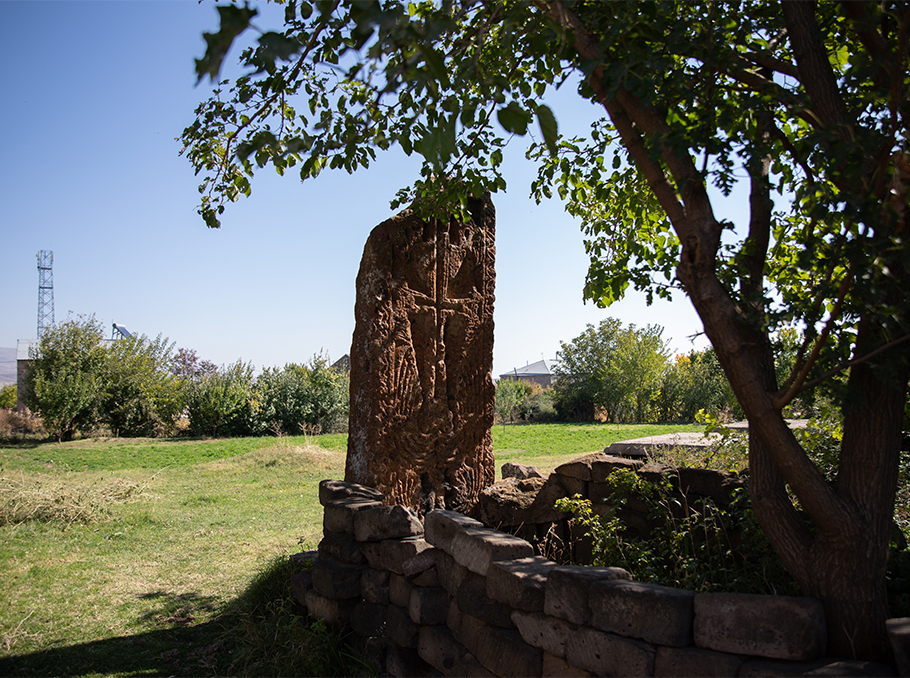
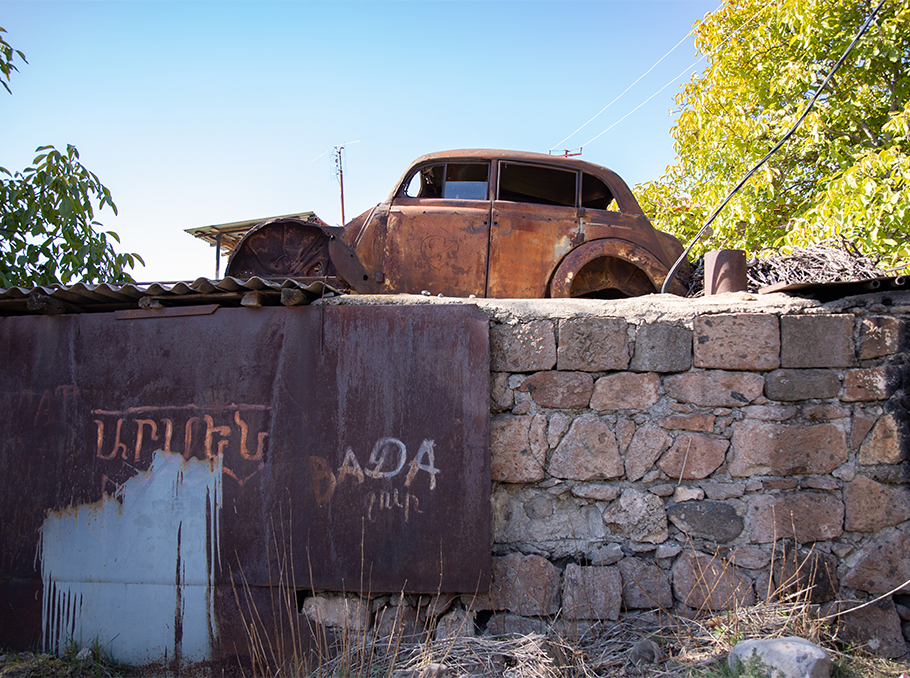
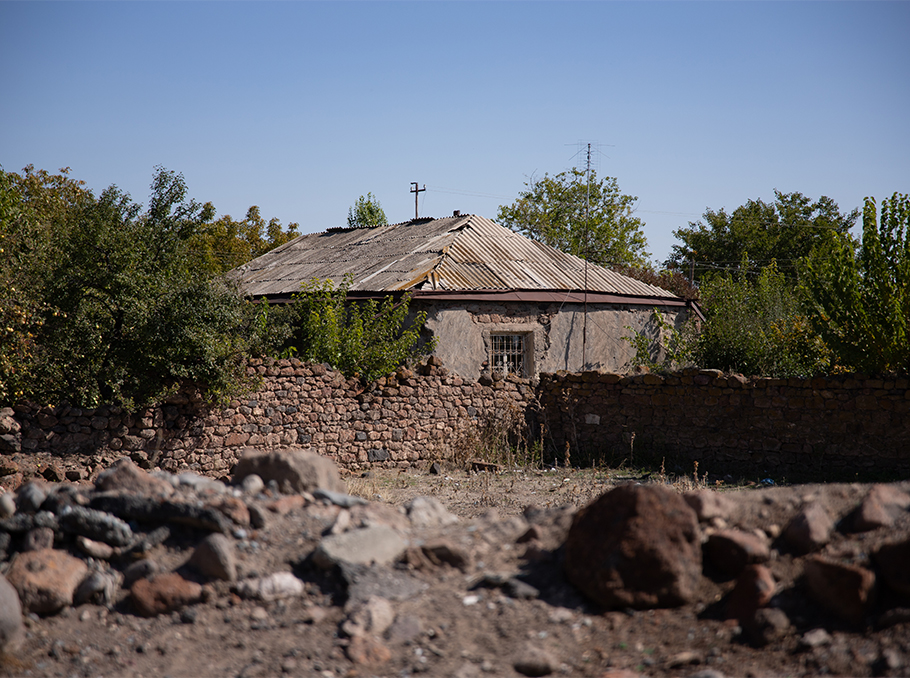

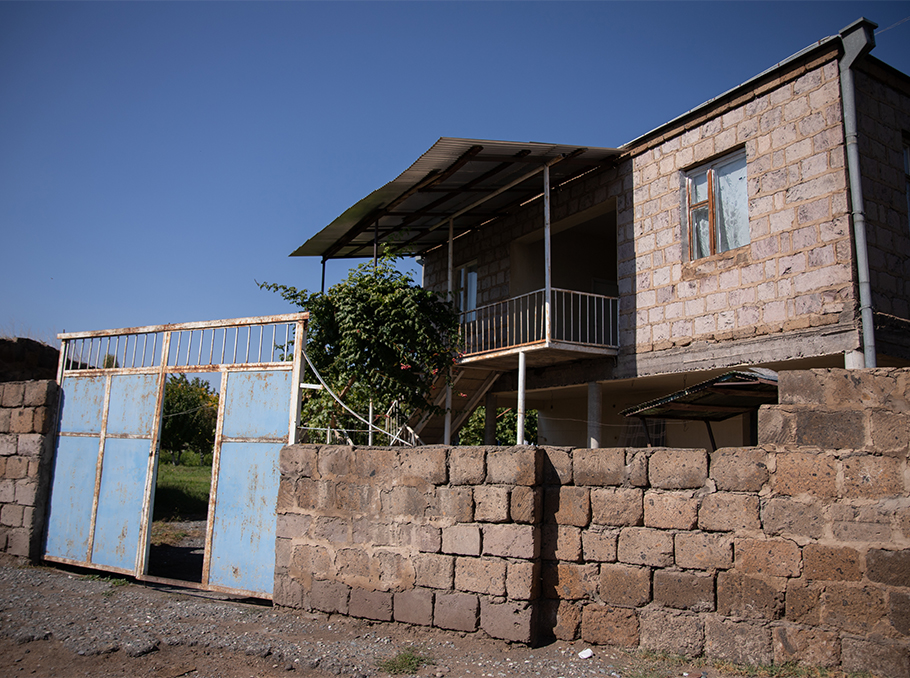

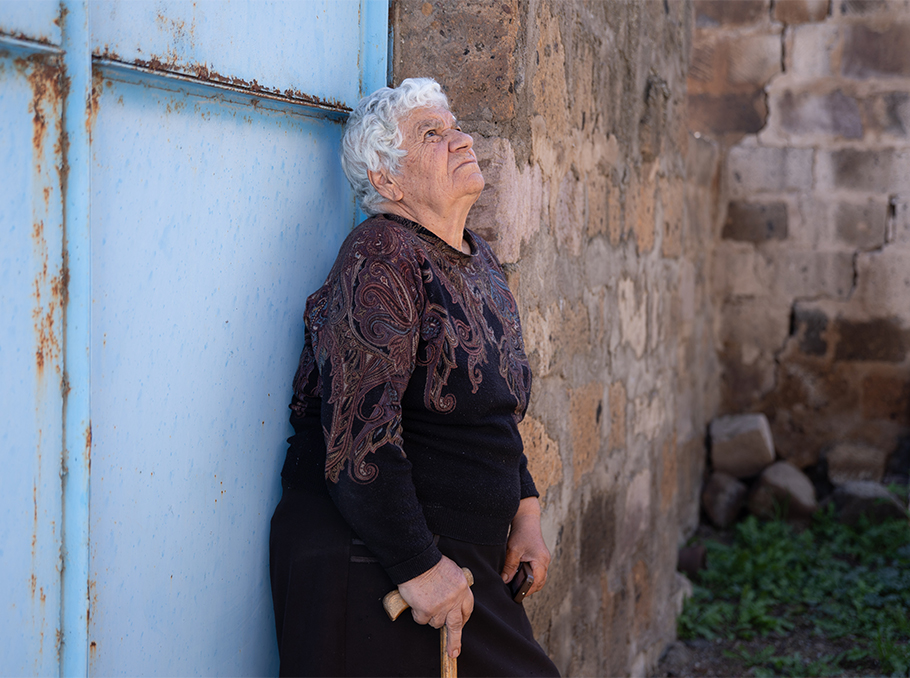
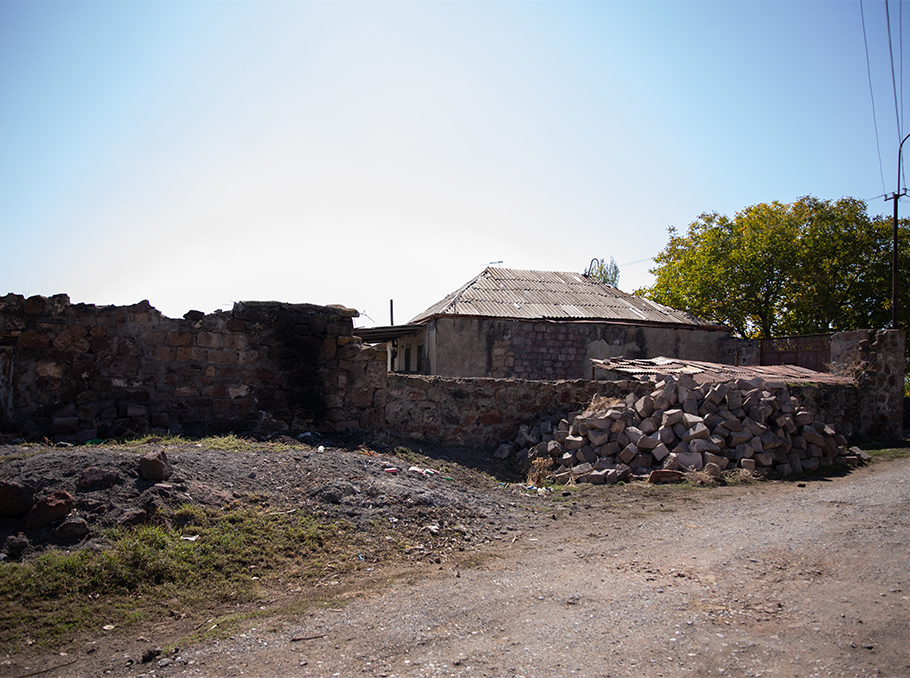
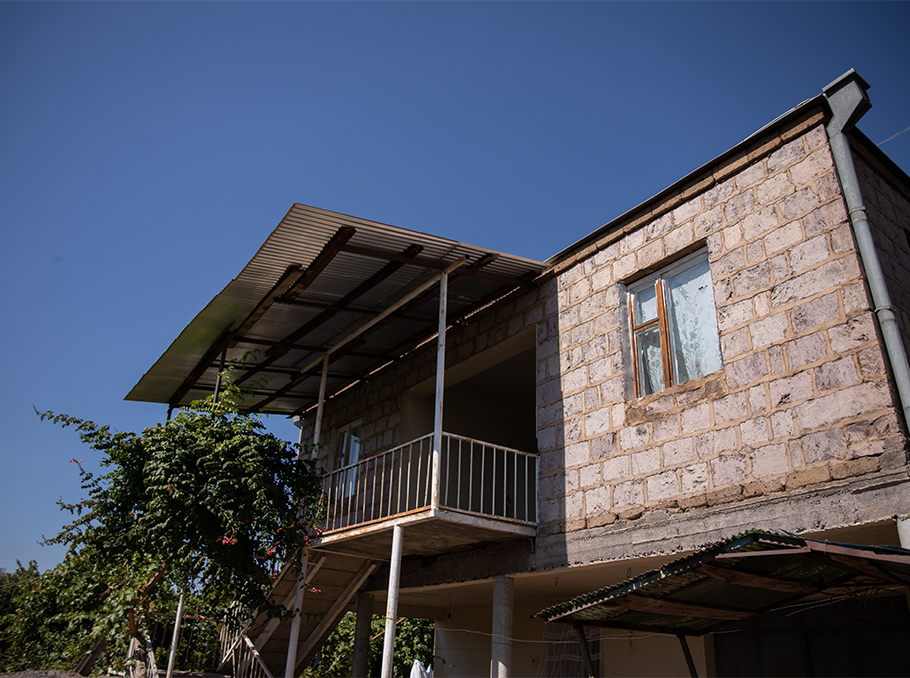
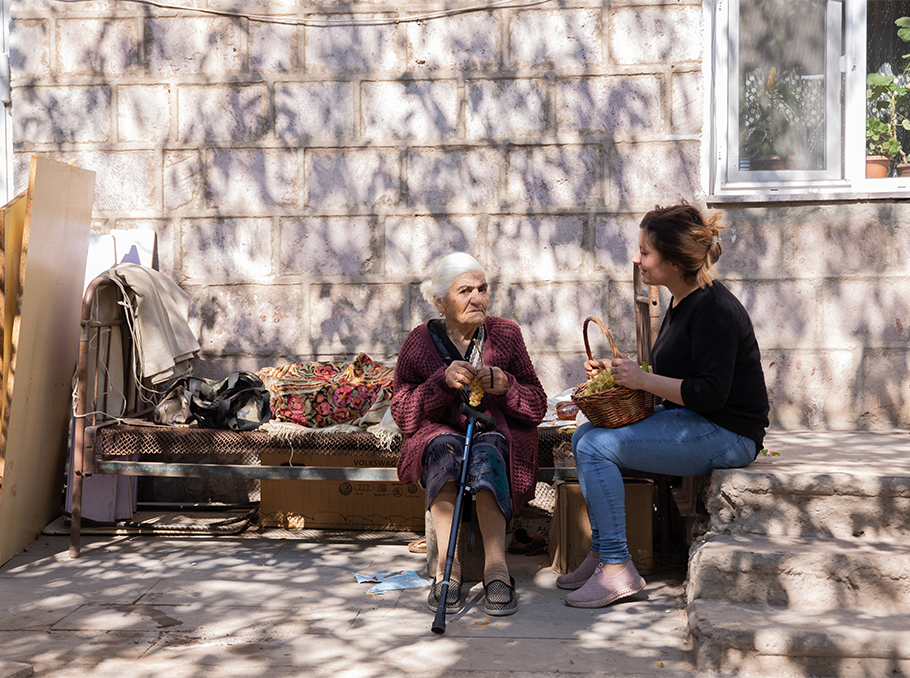
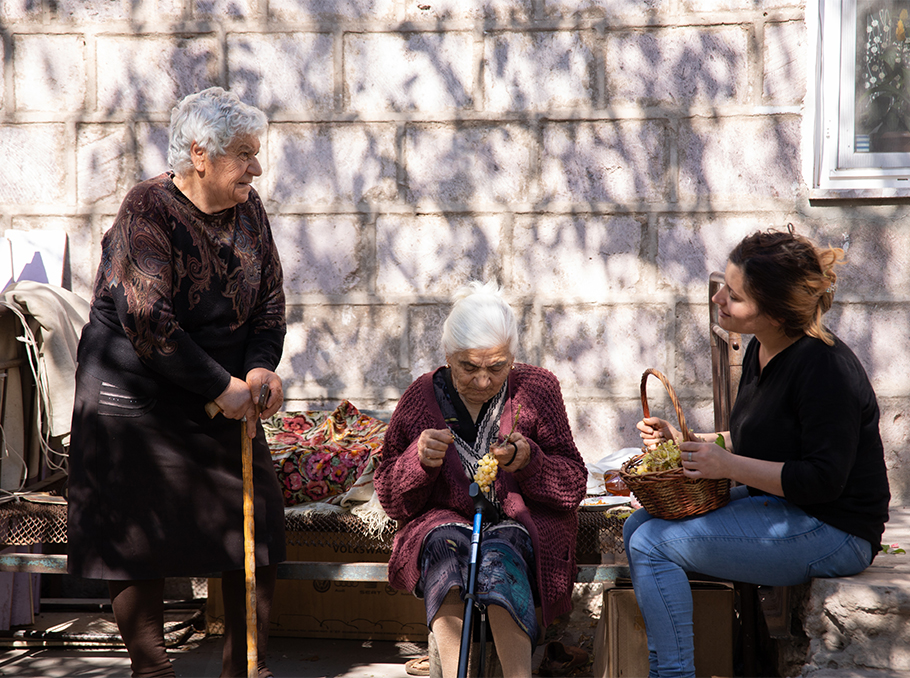
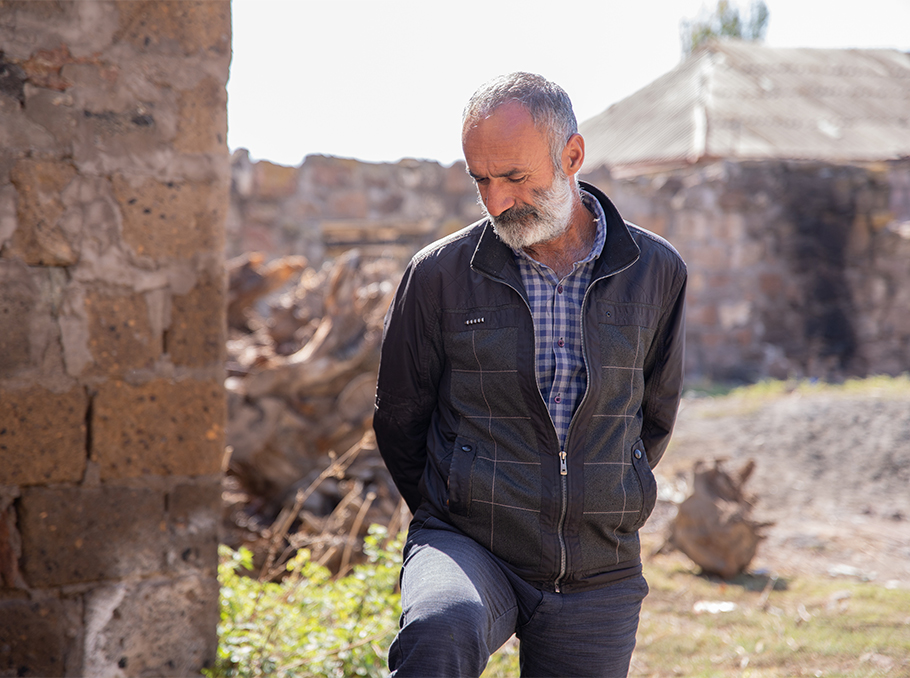
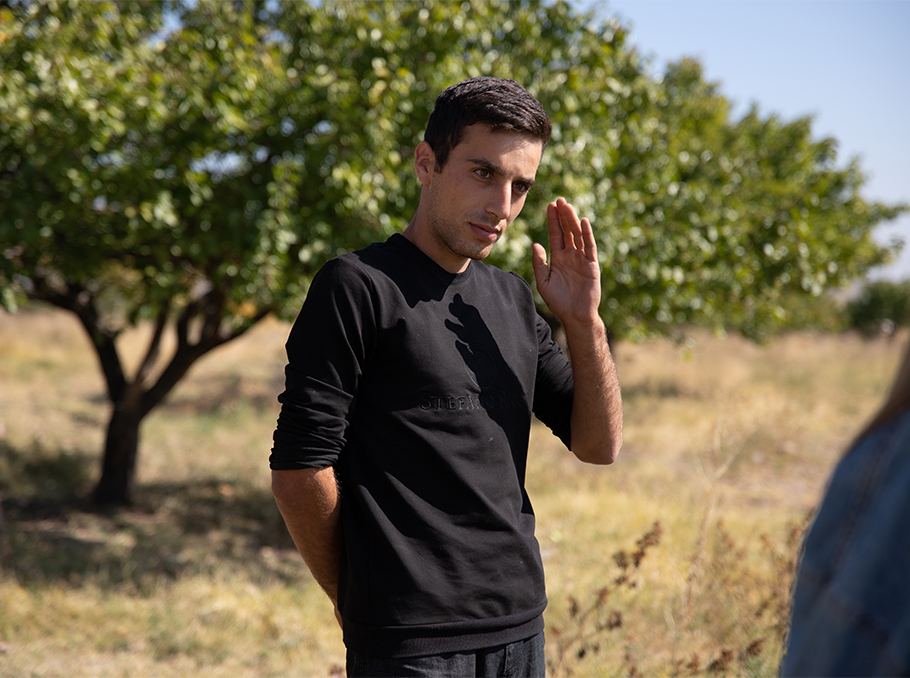






Comments
Dear visitors, You can place your opinion on the material using your Facebook account. Please, be polite and follow our simple rules: you are not allowed to make off - topic comments, place advertisements, use abusive and filthy language. The editorial staff reserves the right to moderate and delete comments in case of breach of the rules.